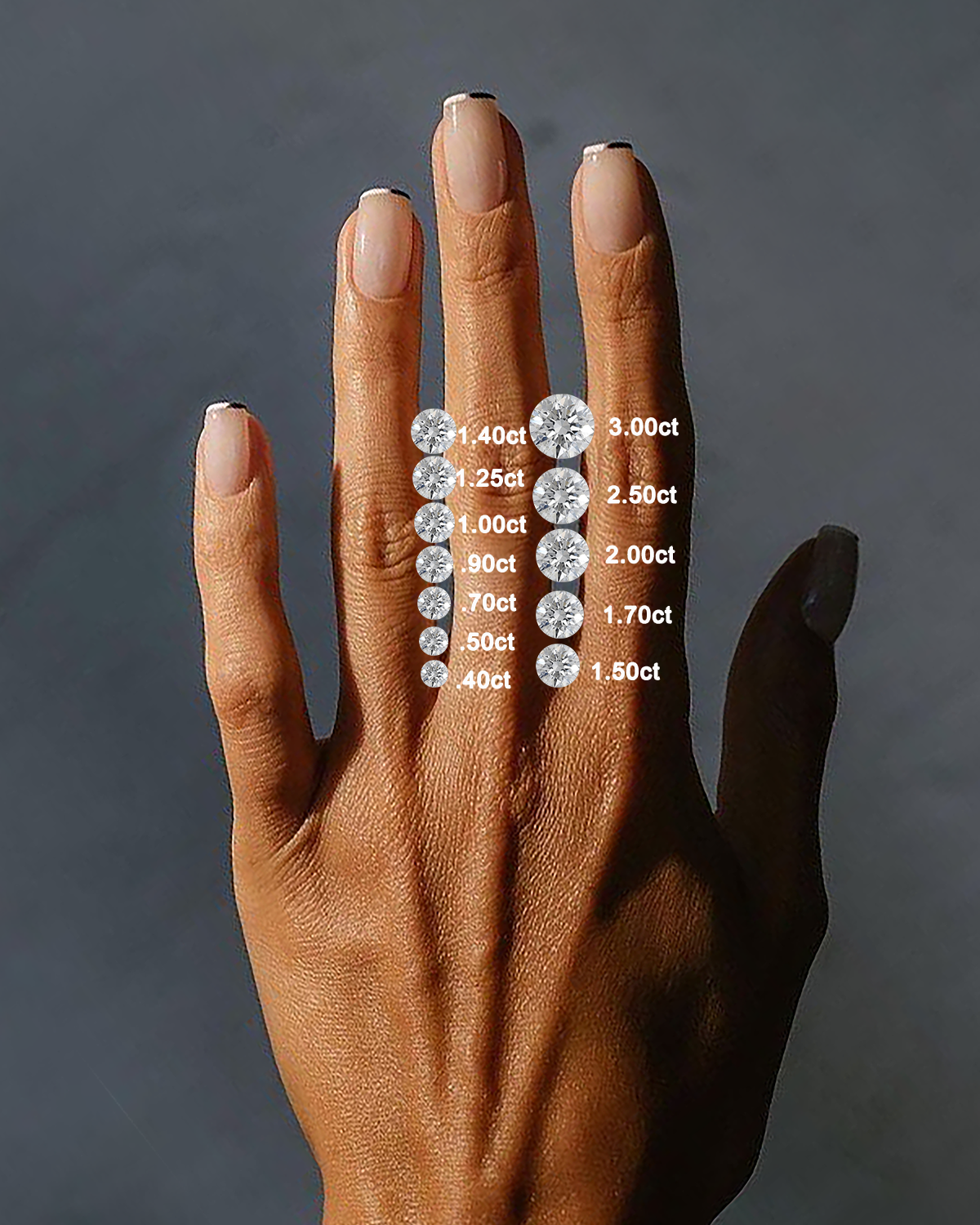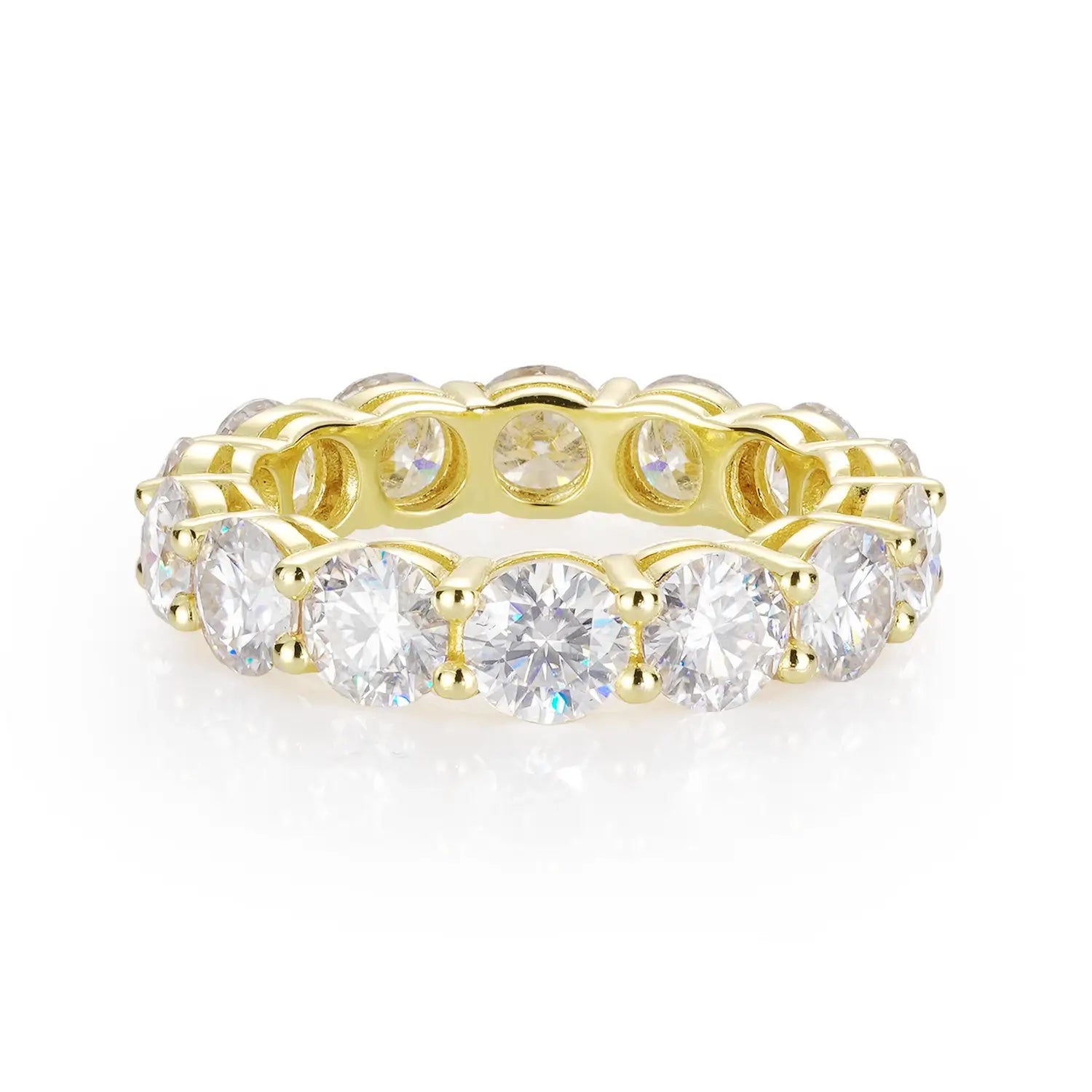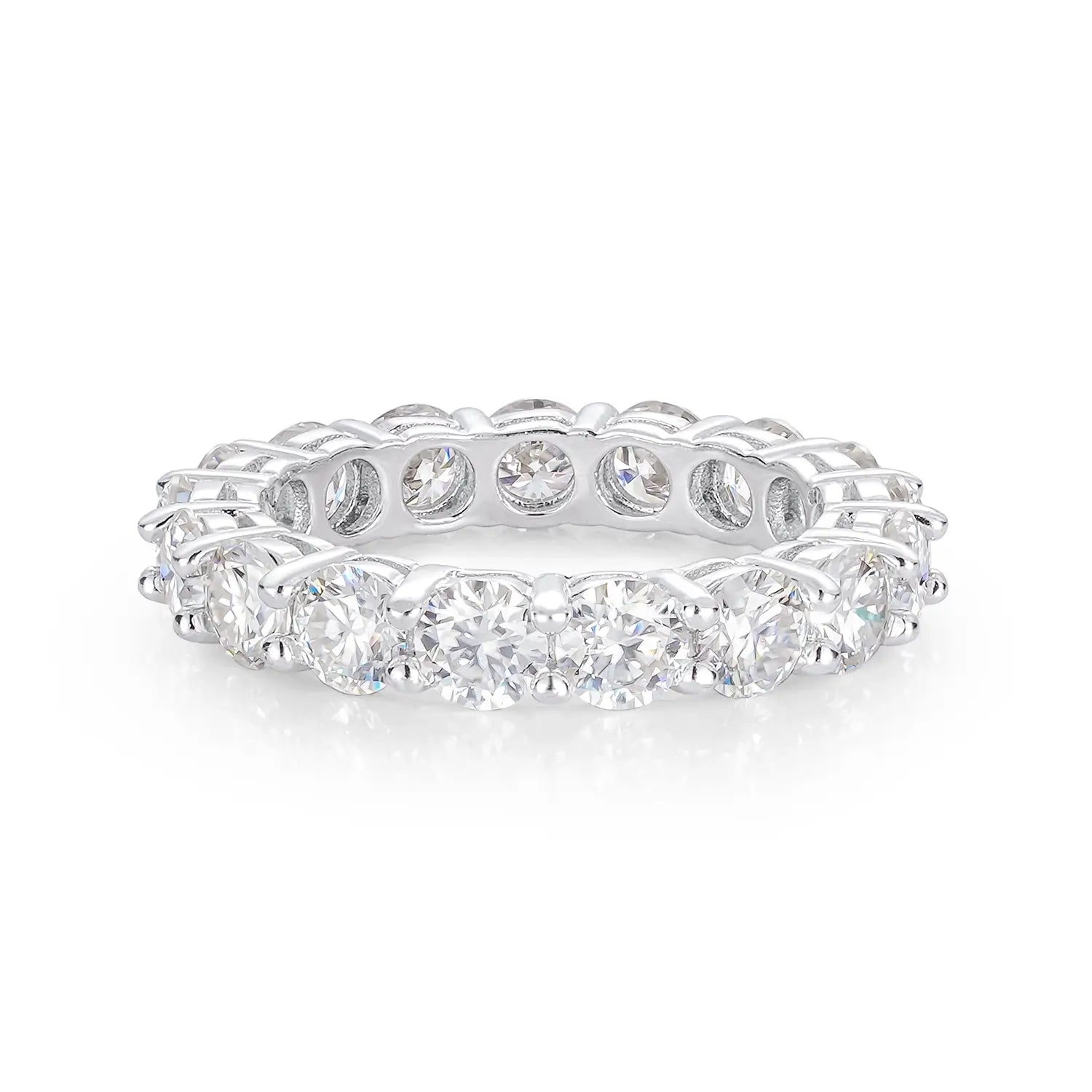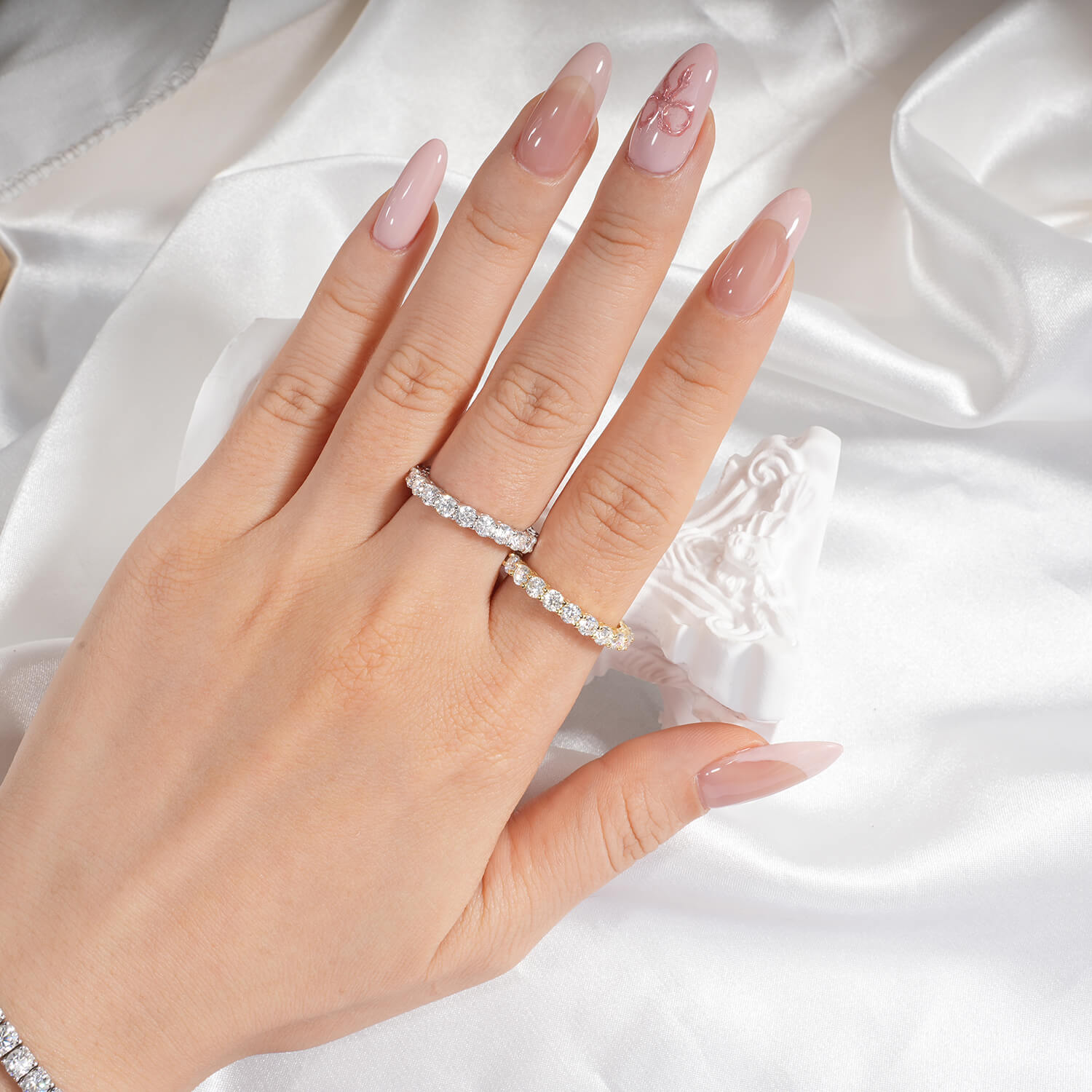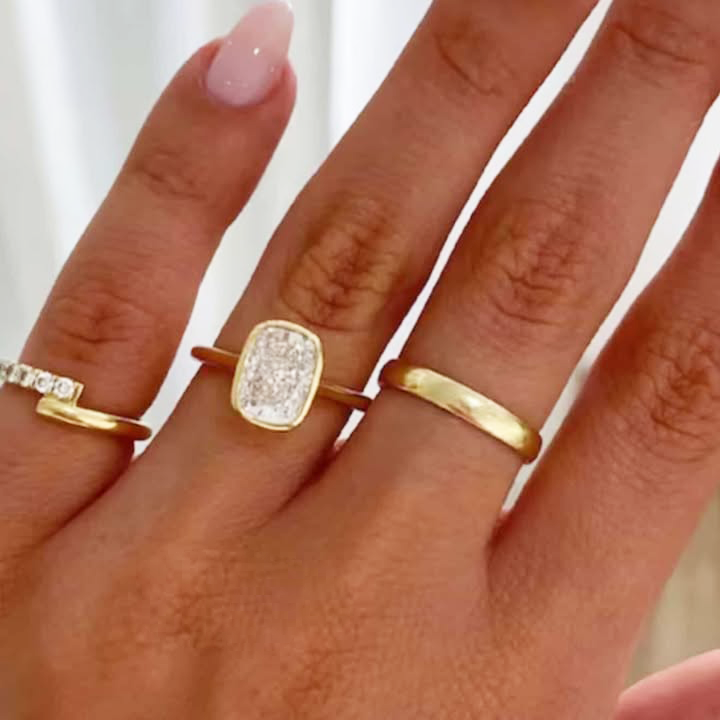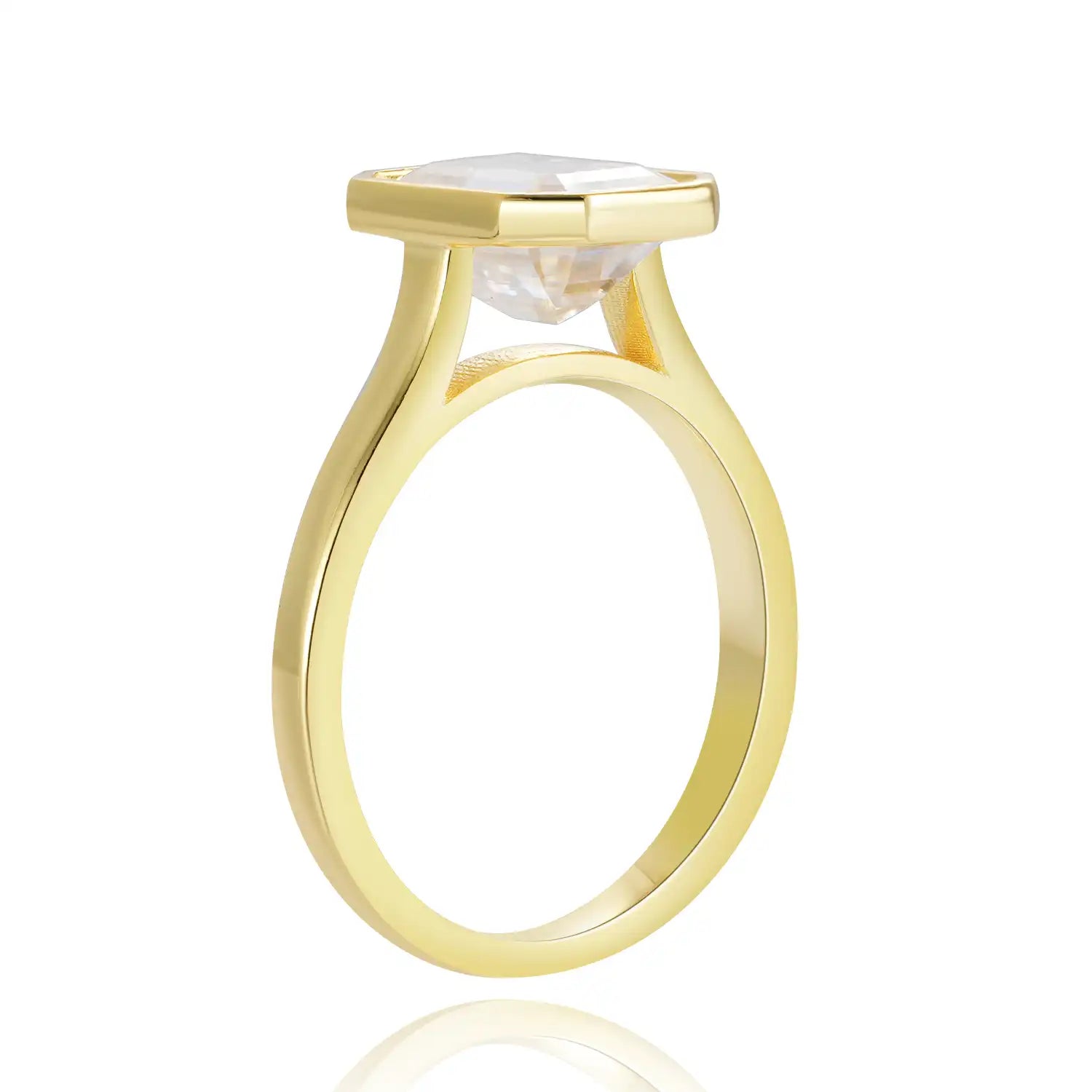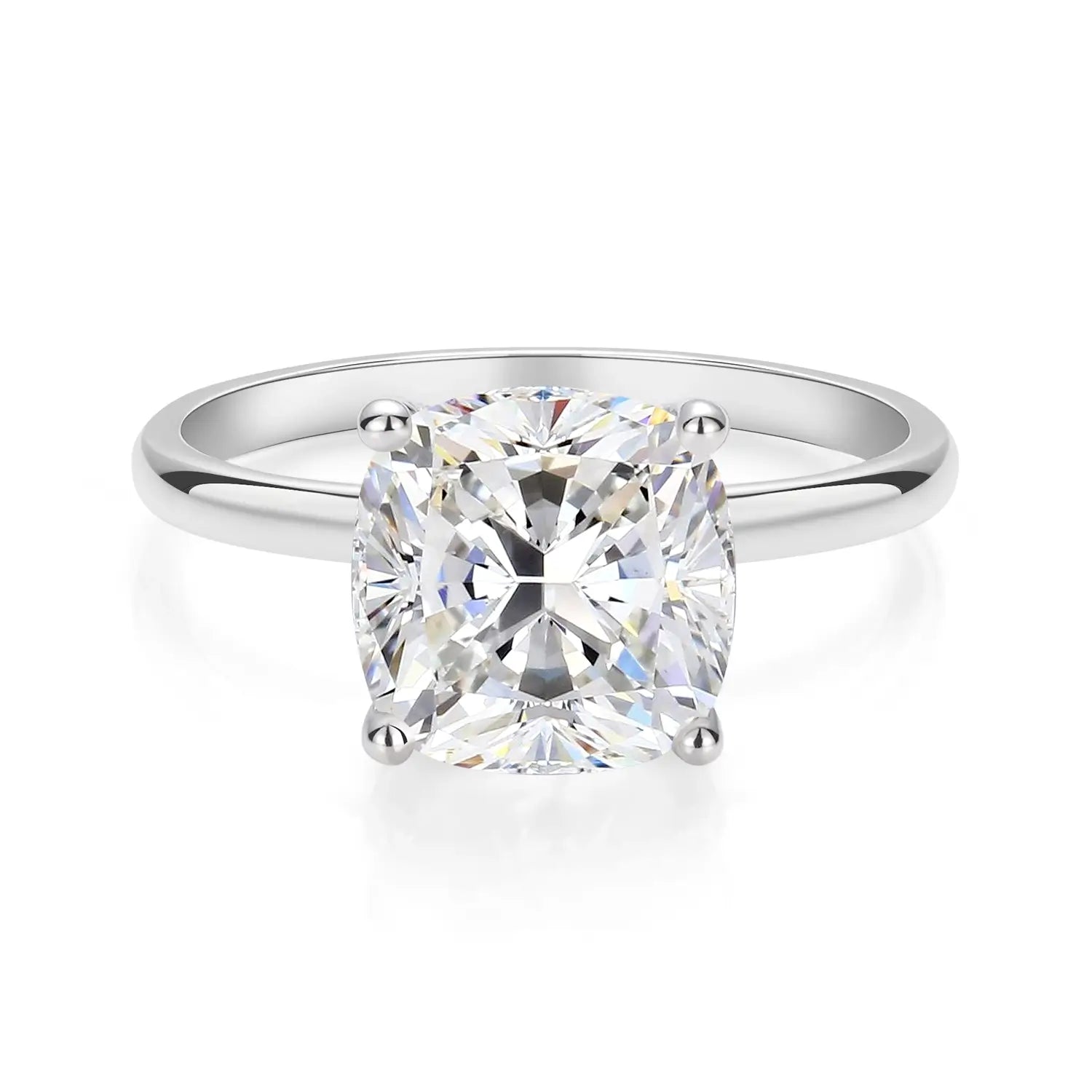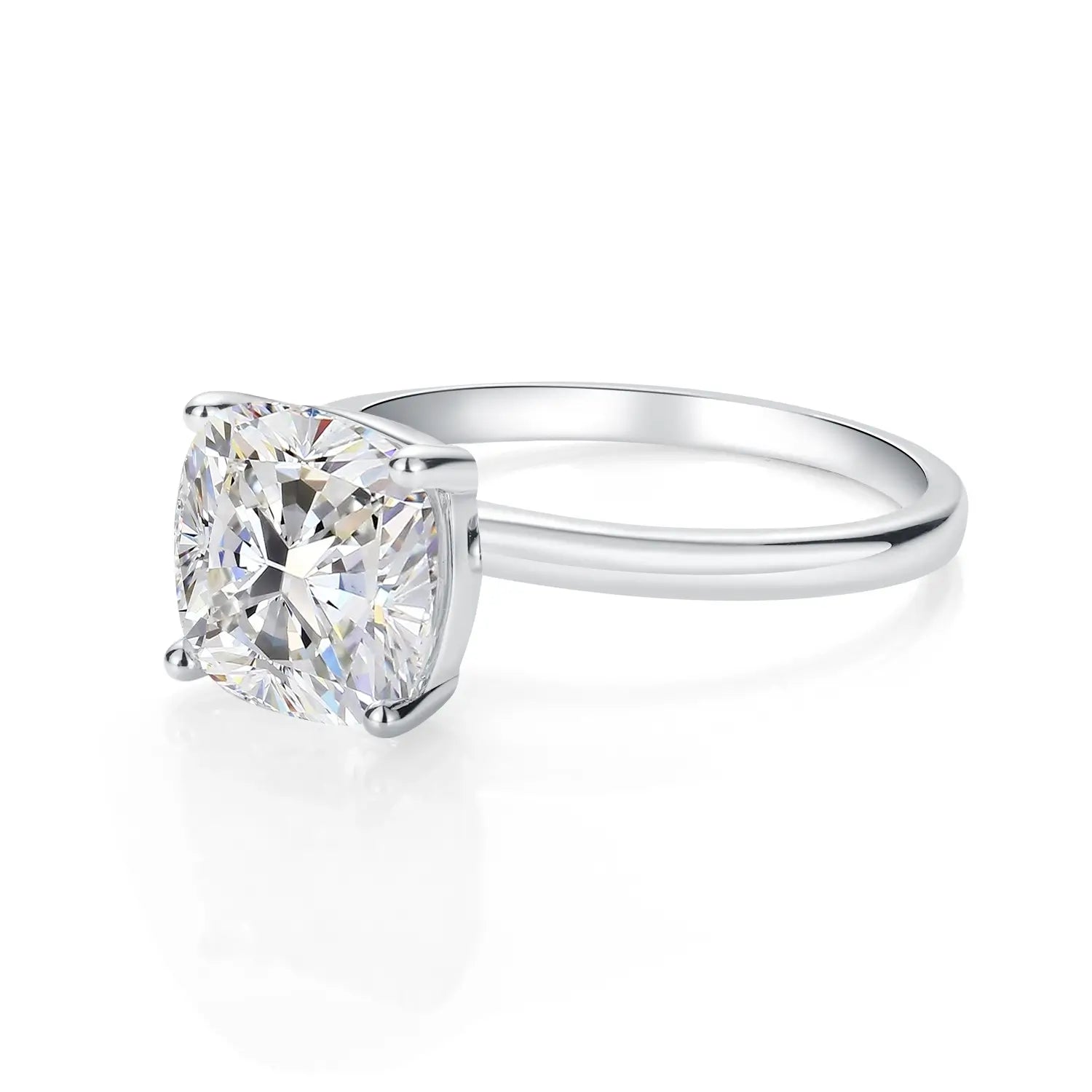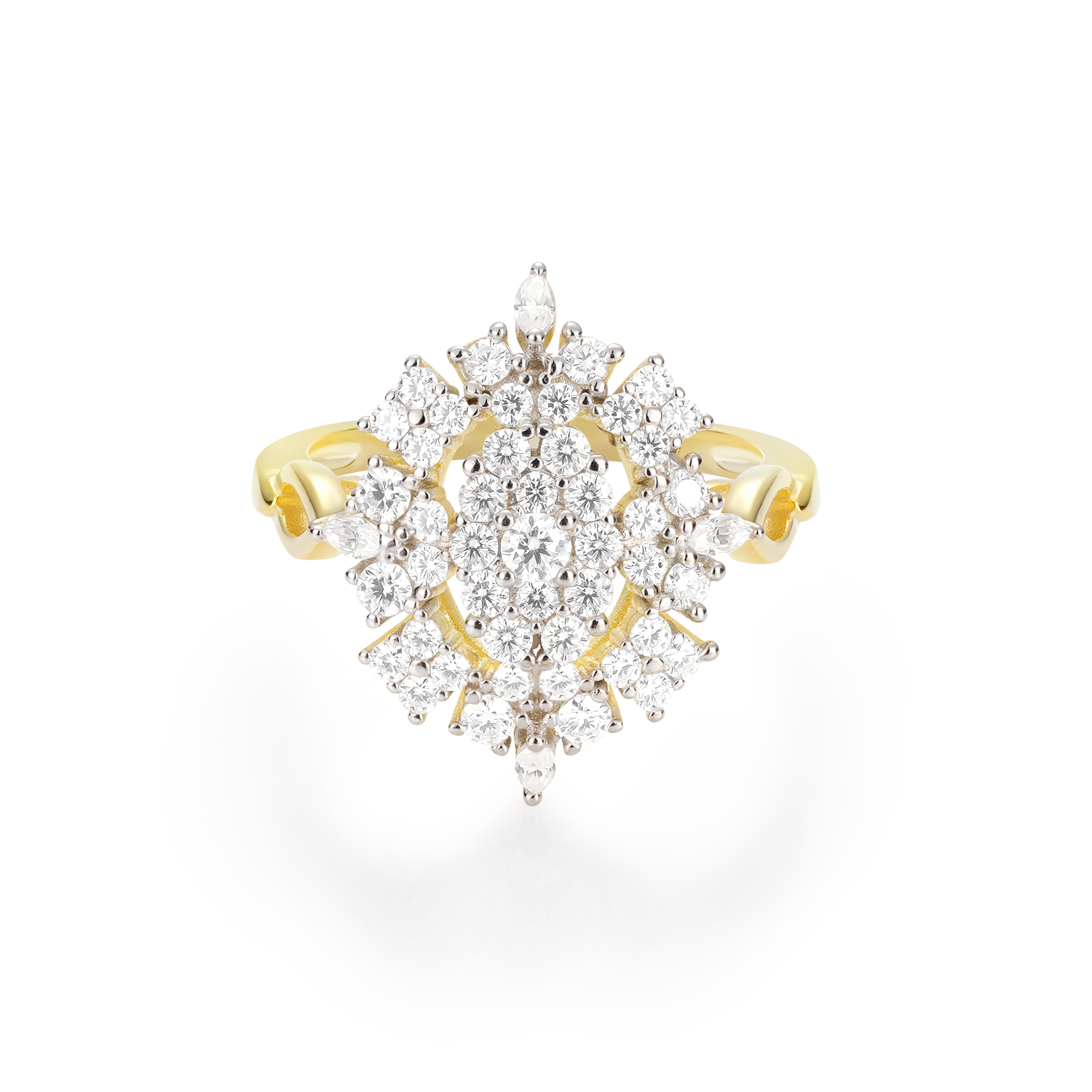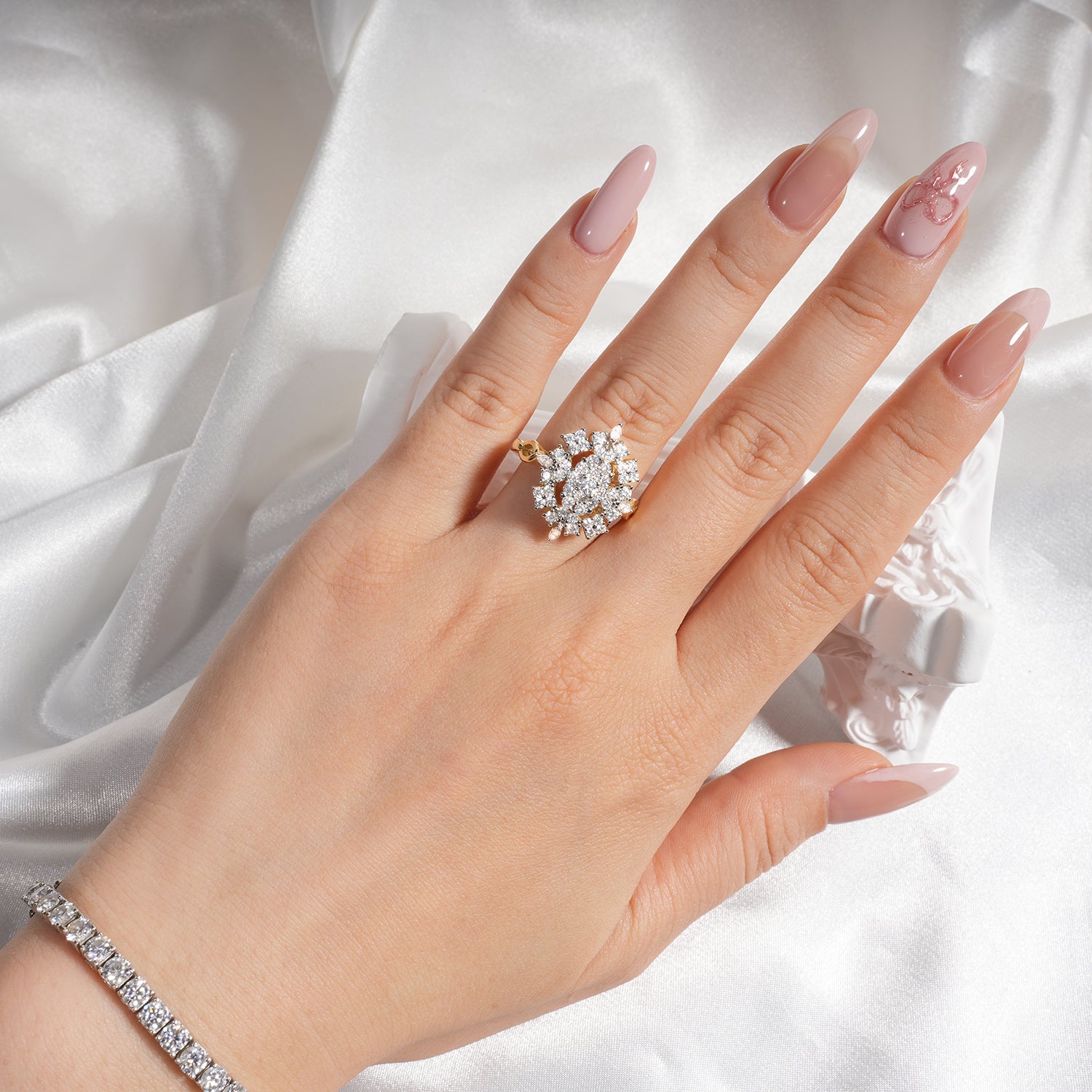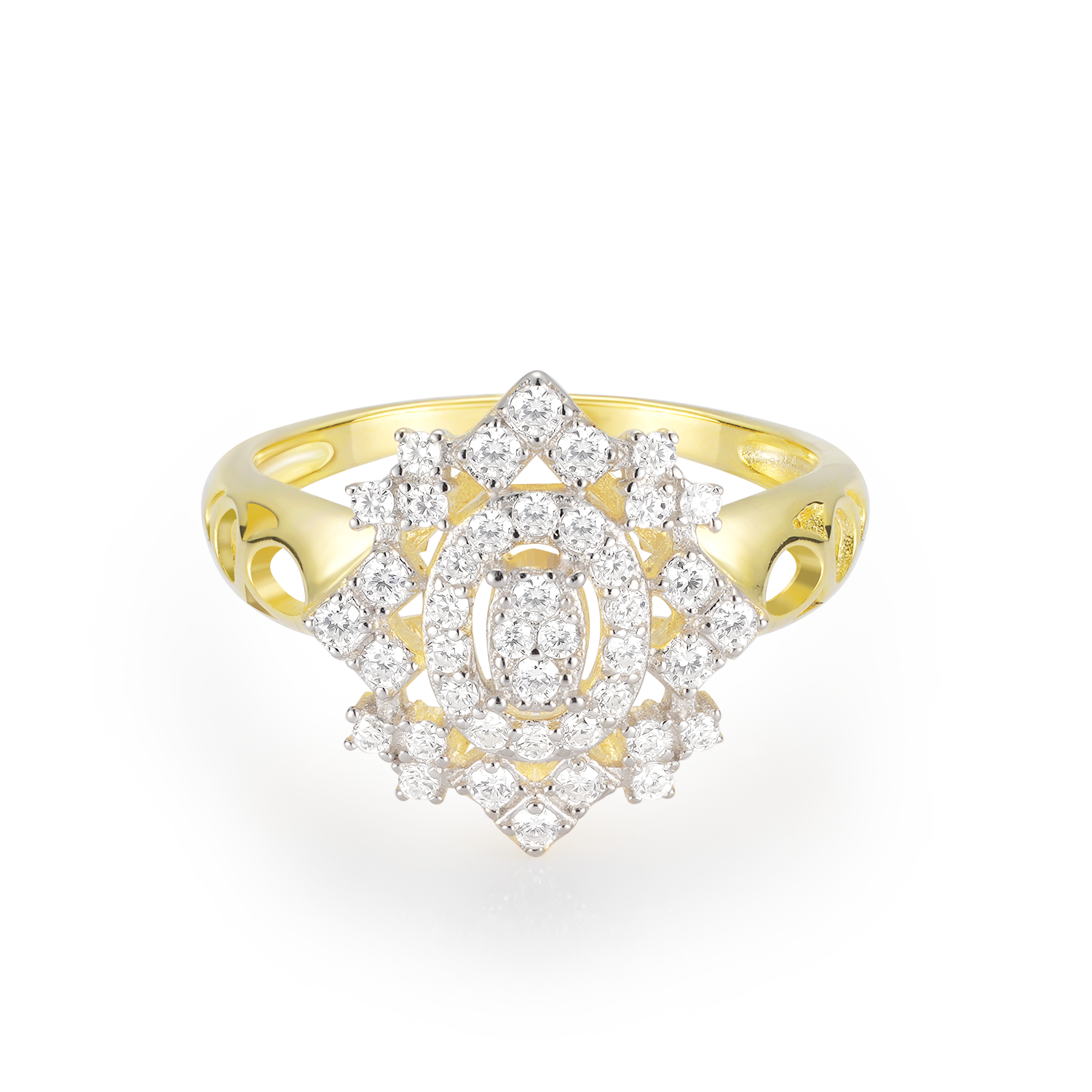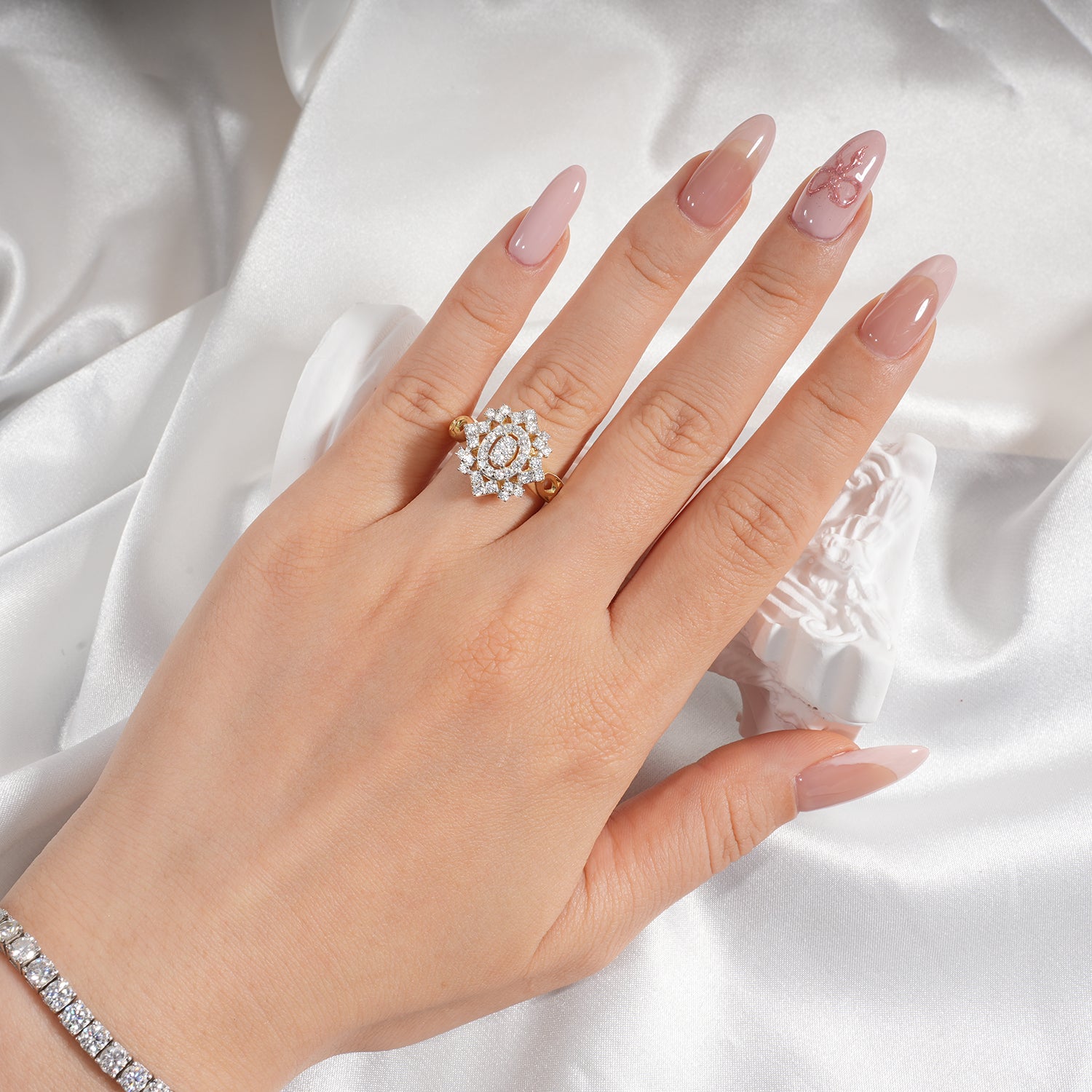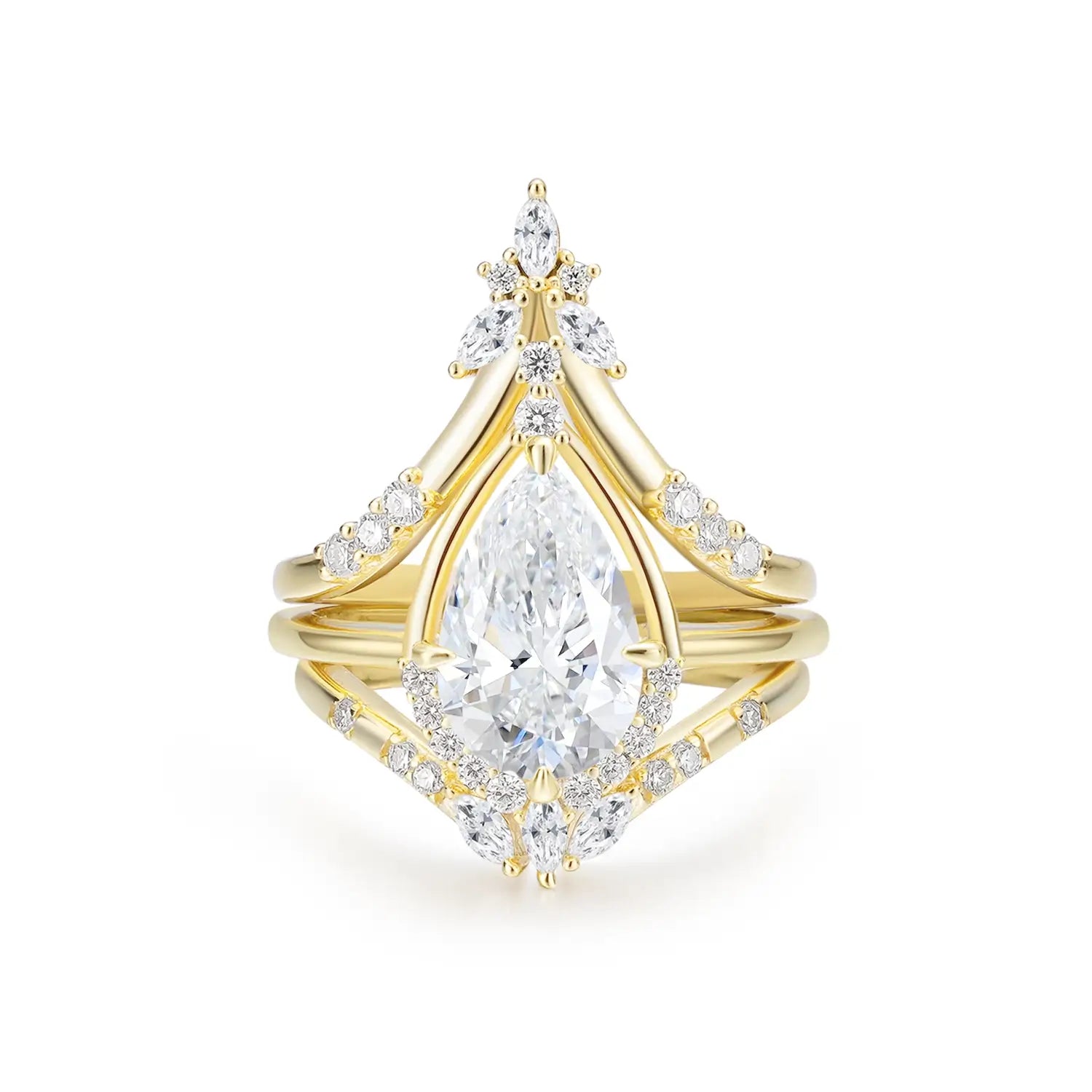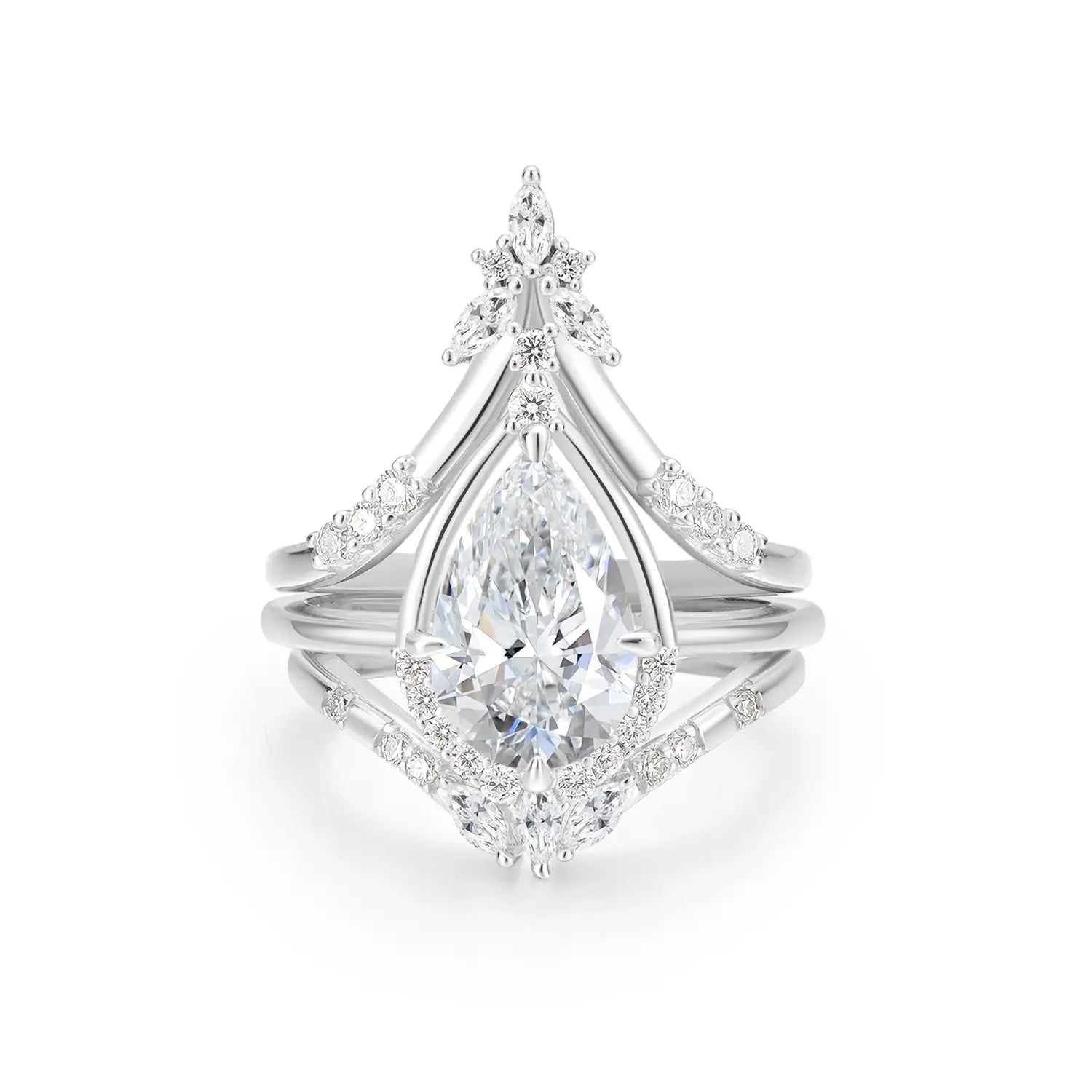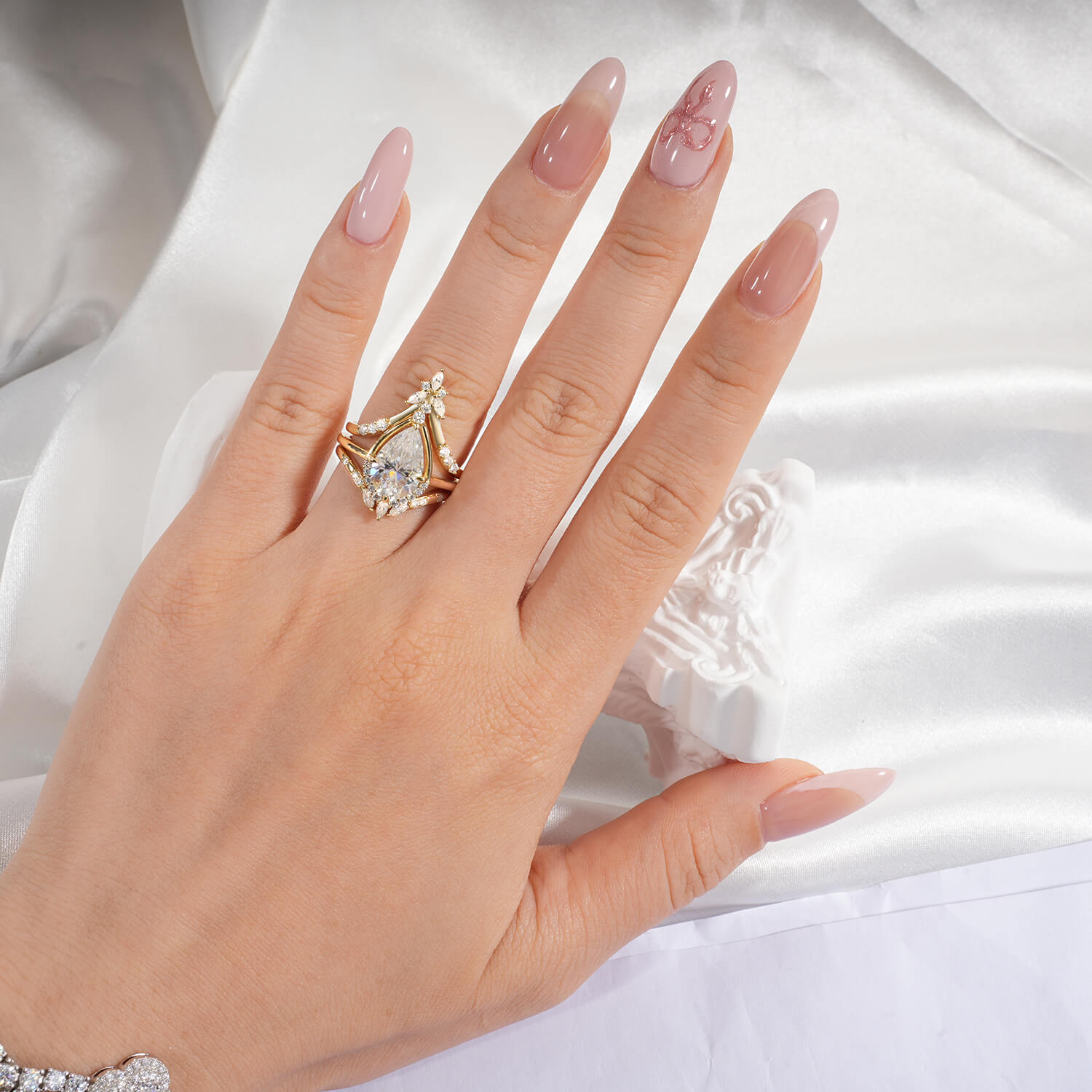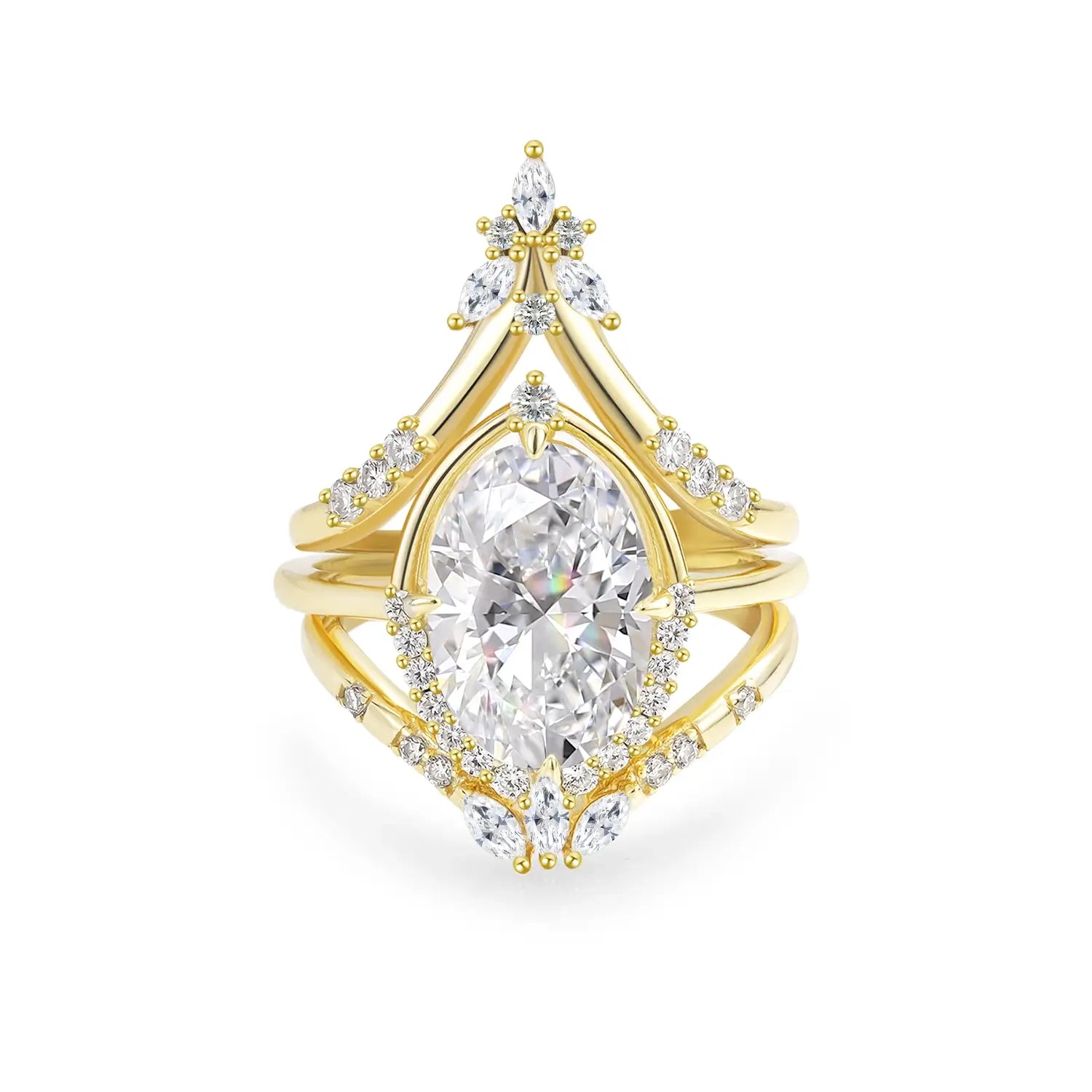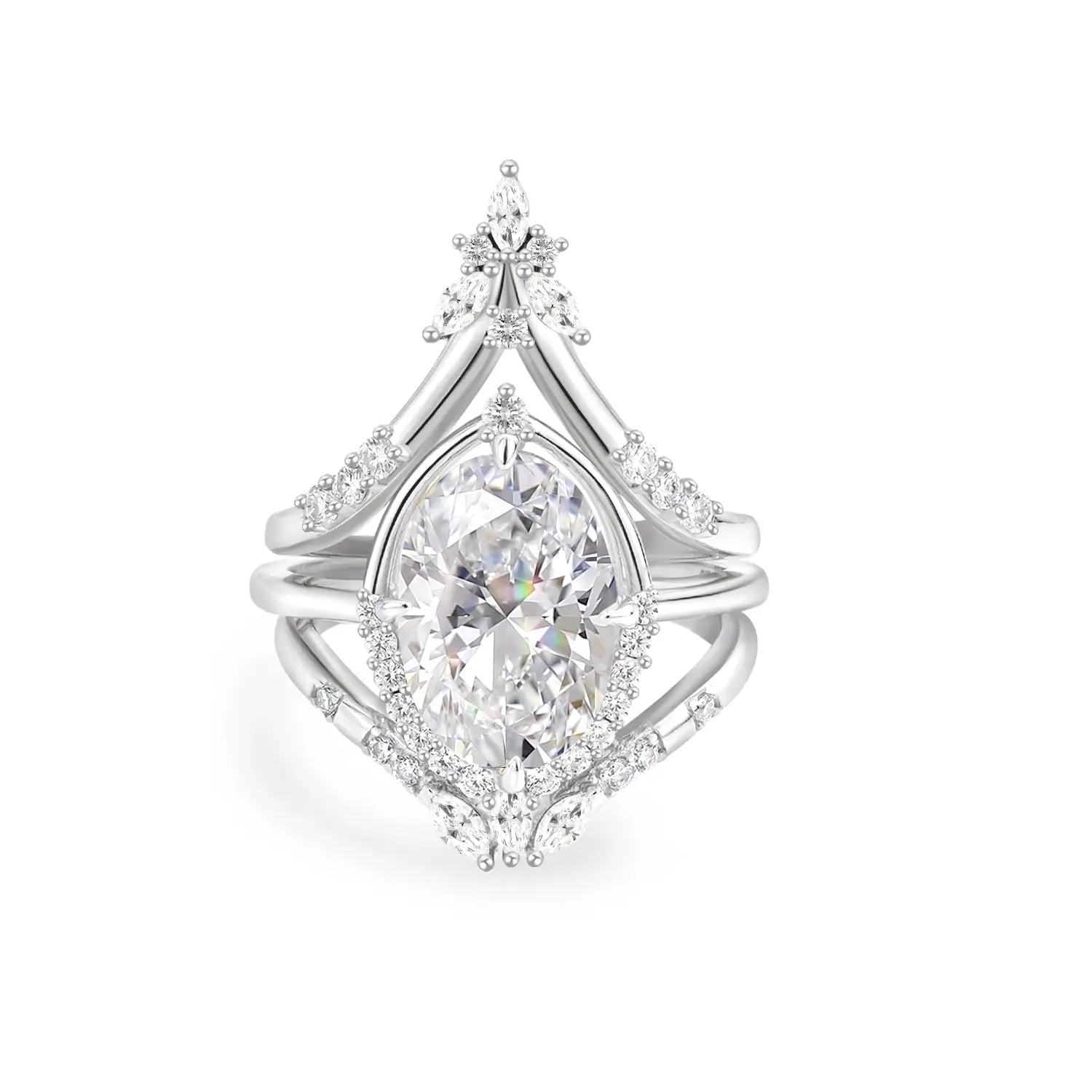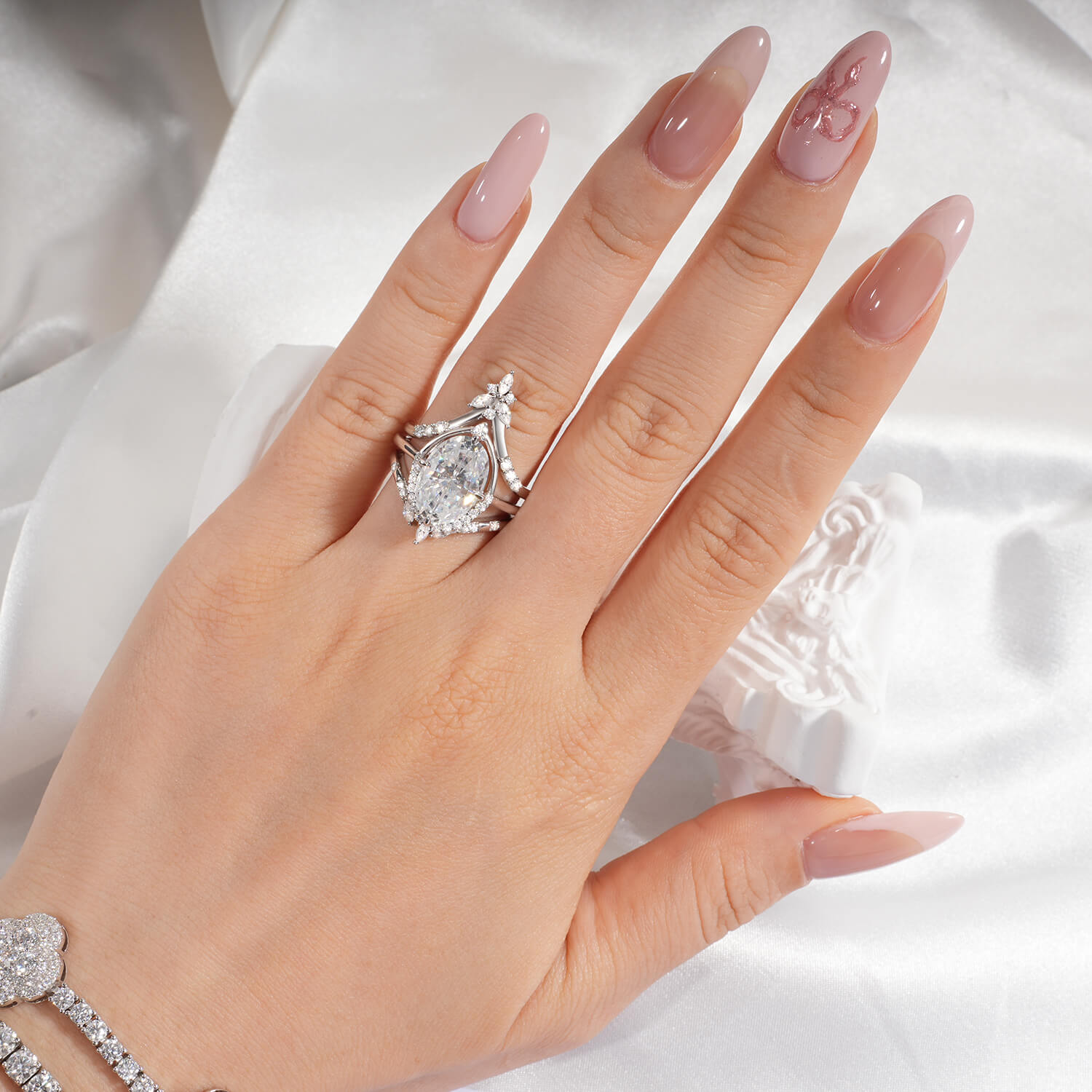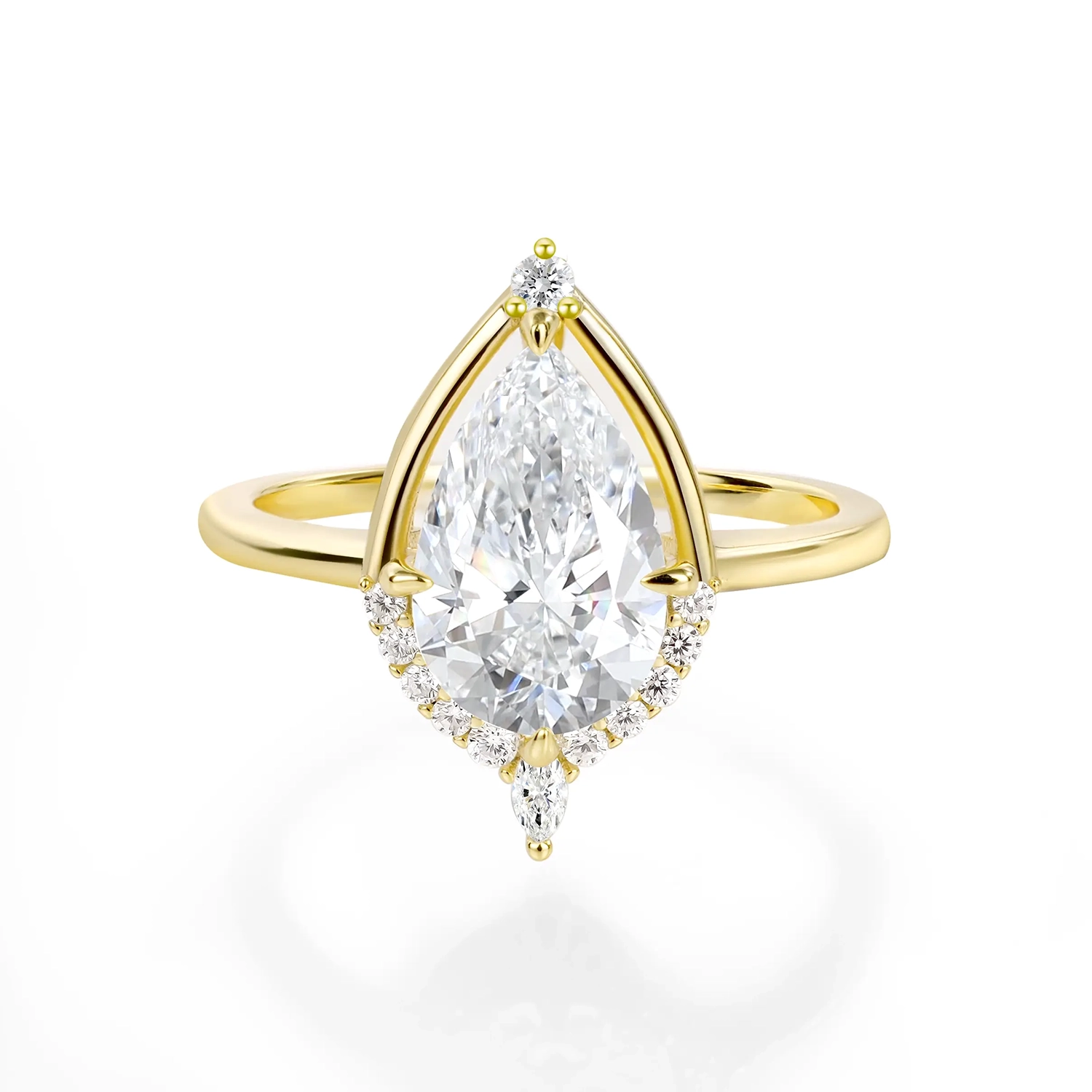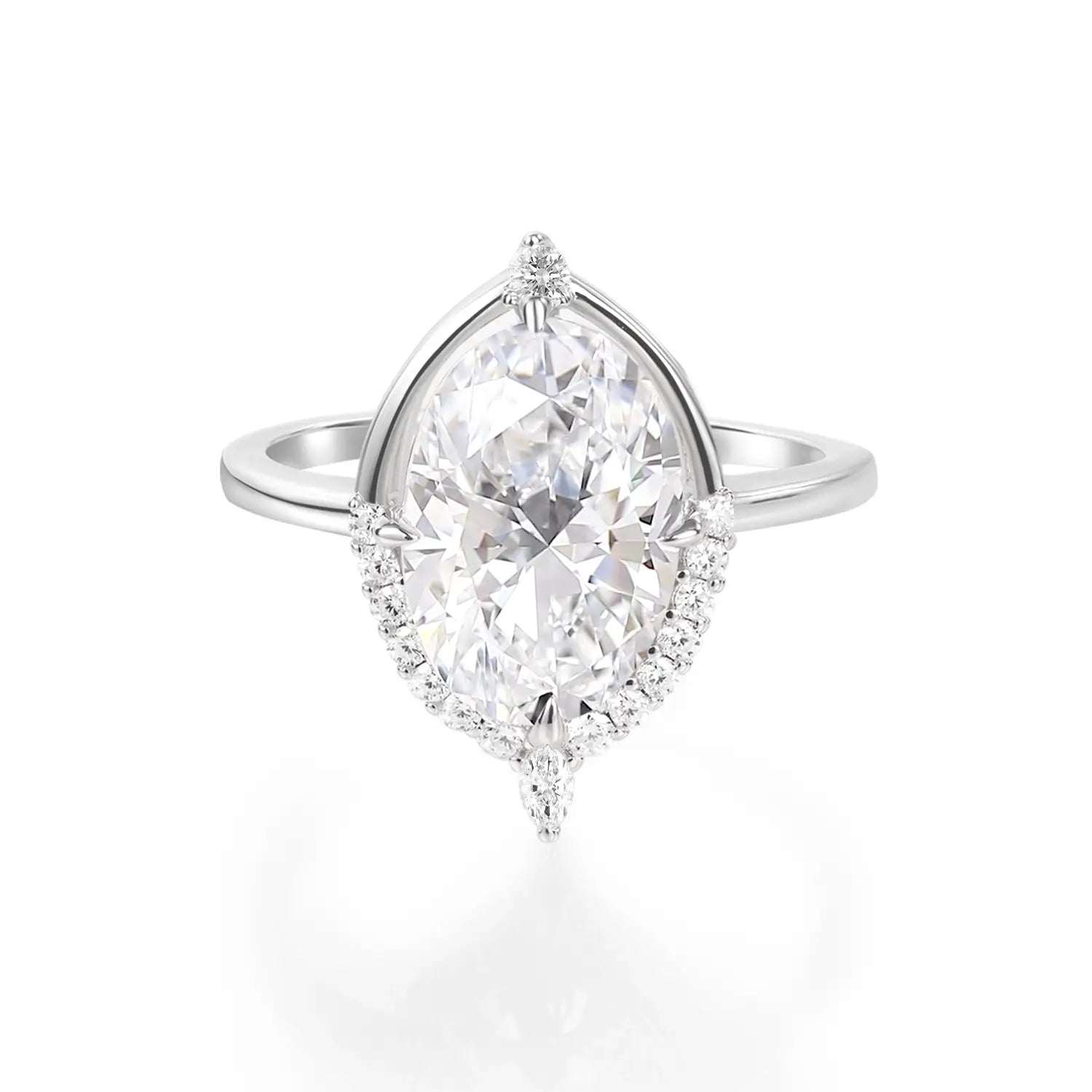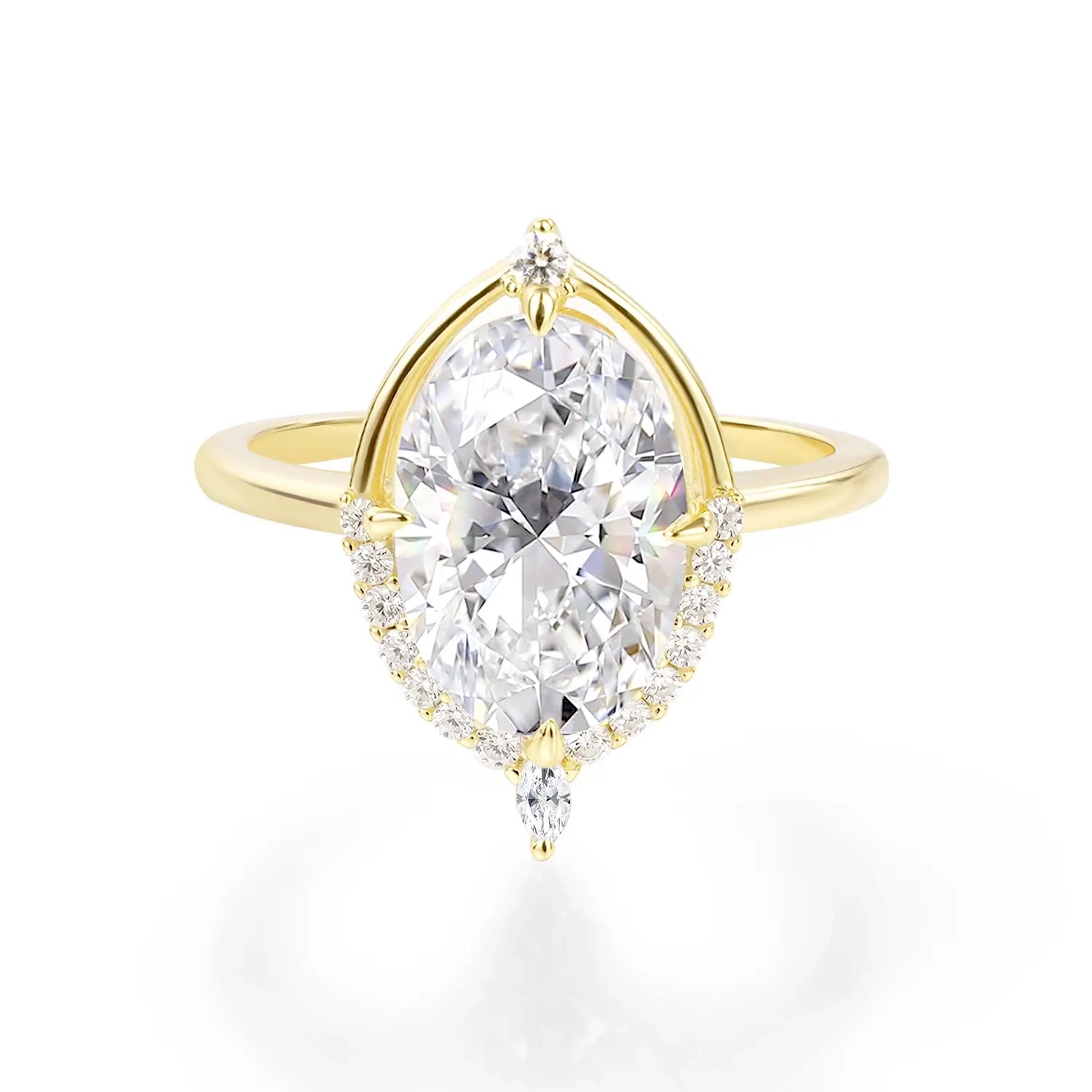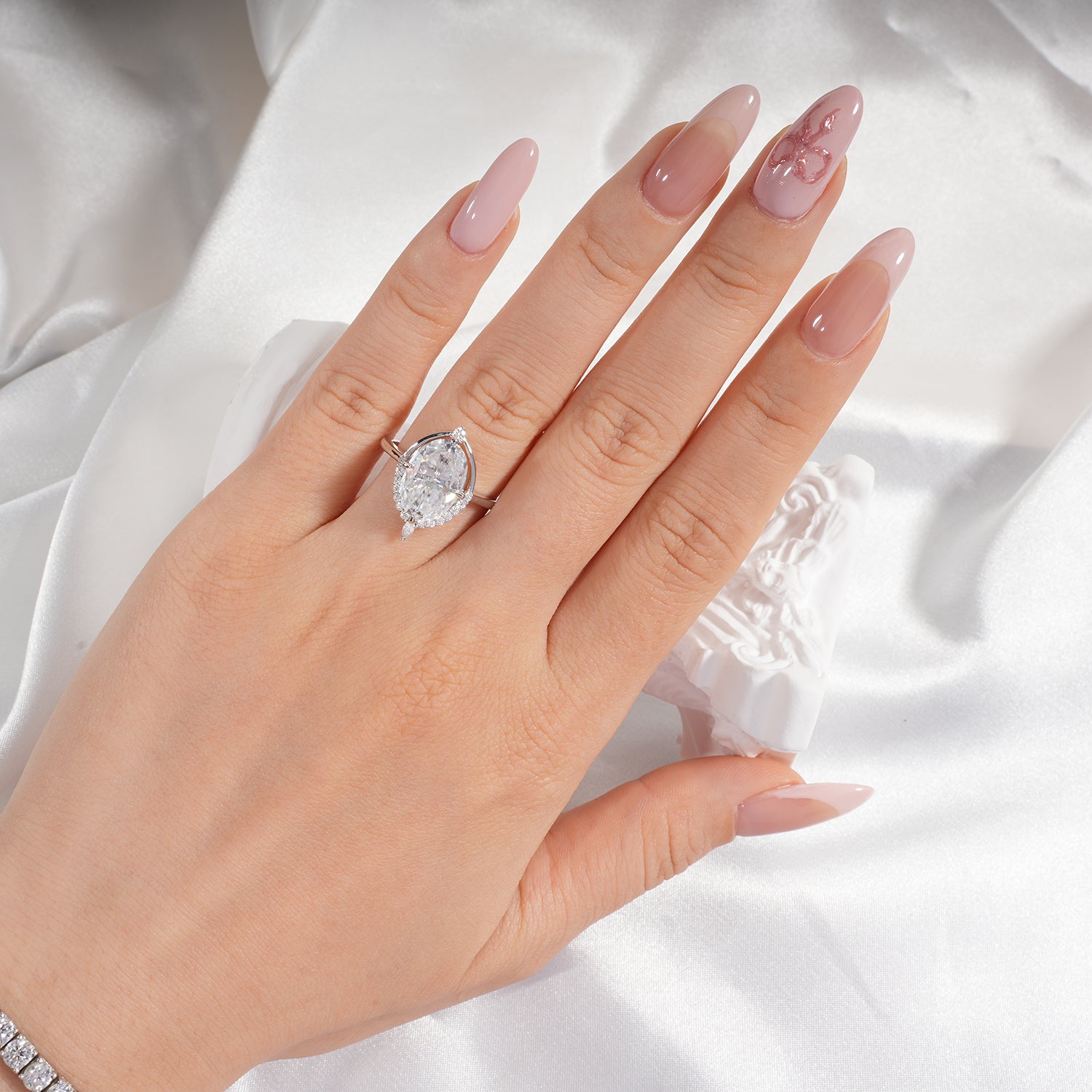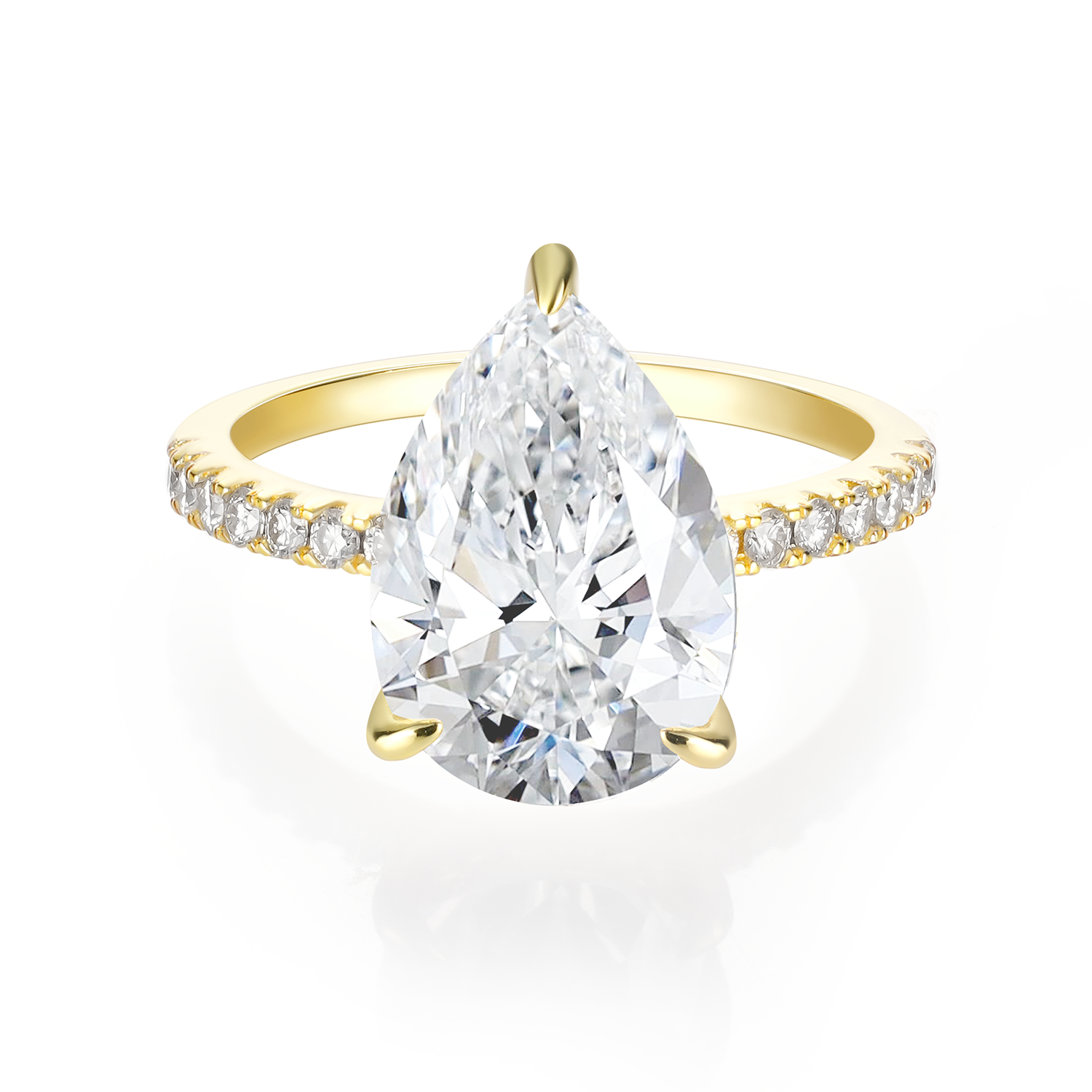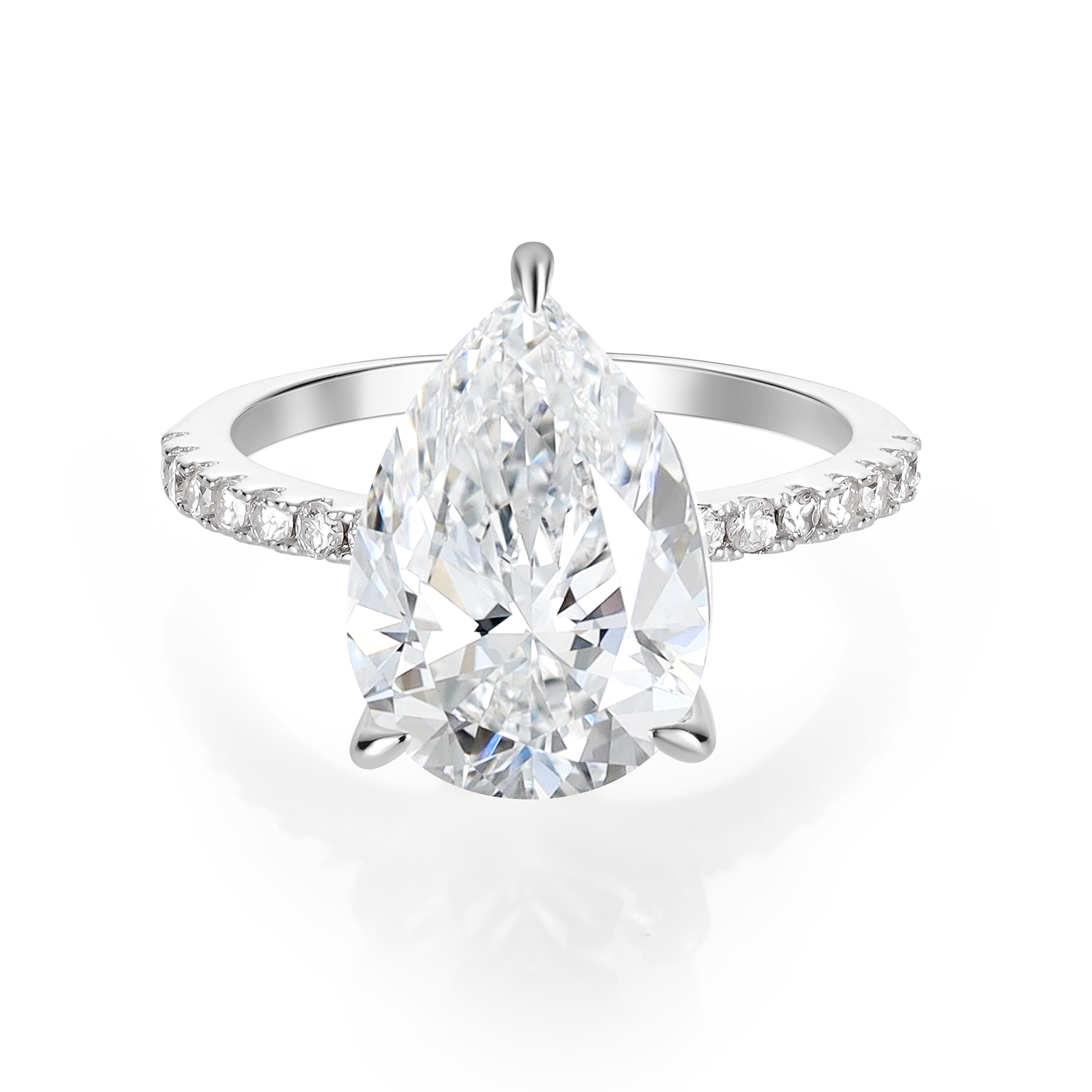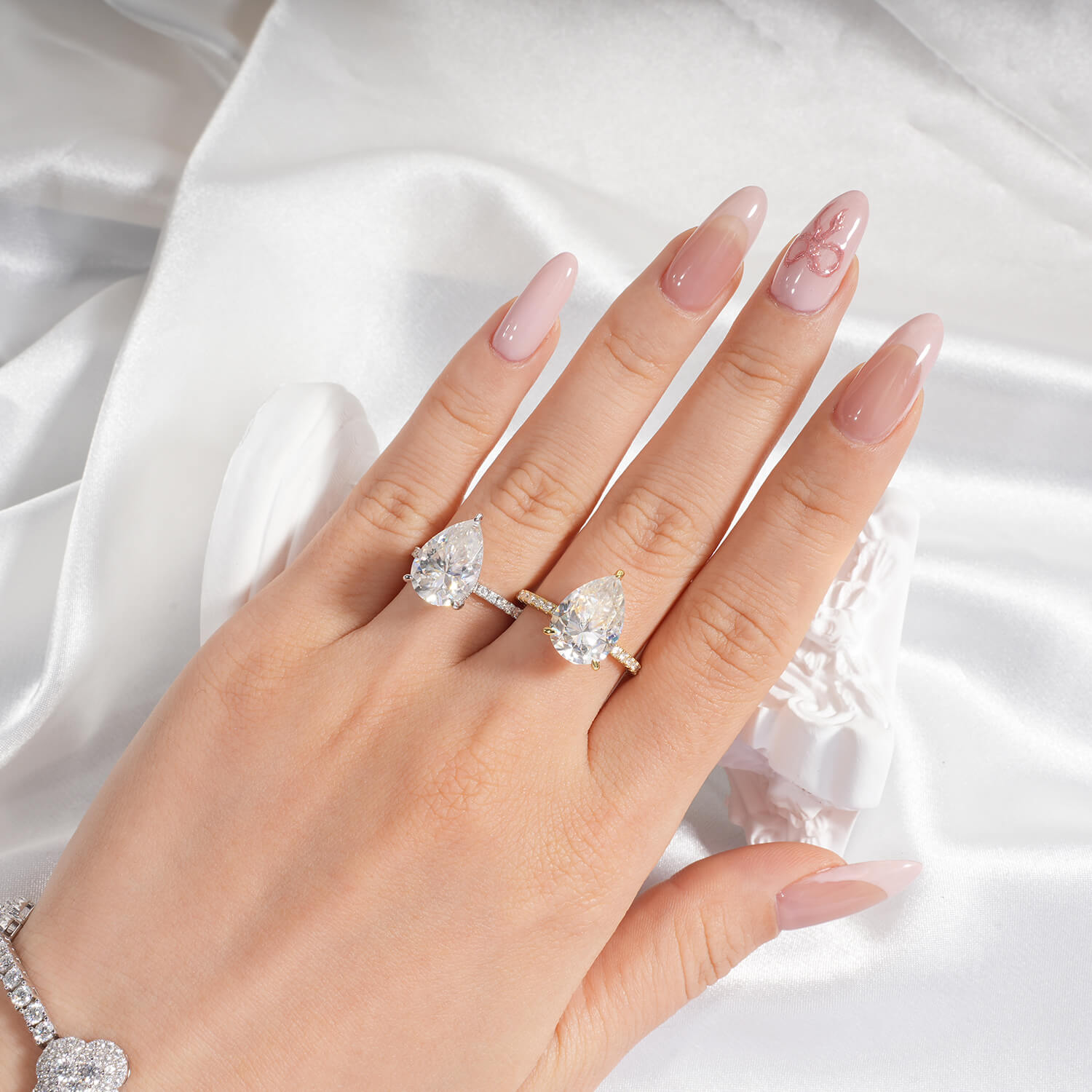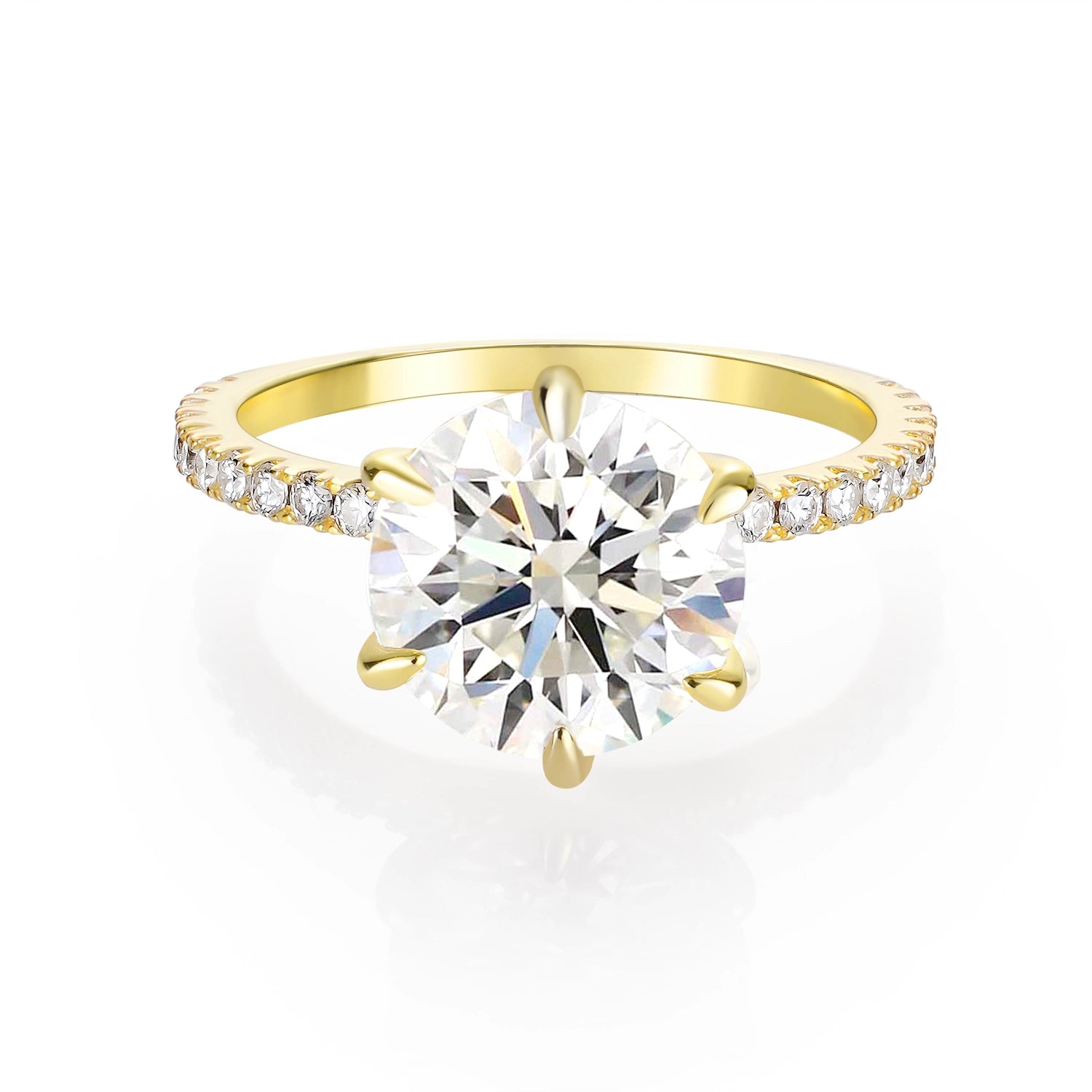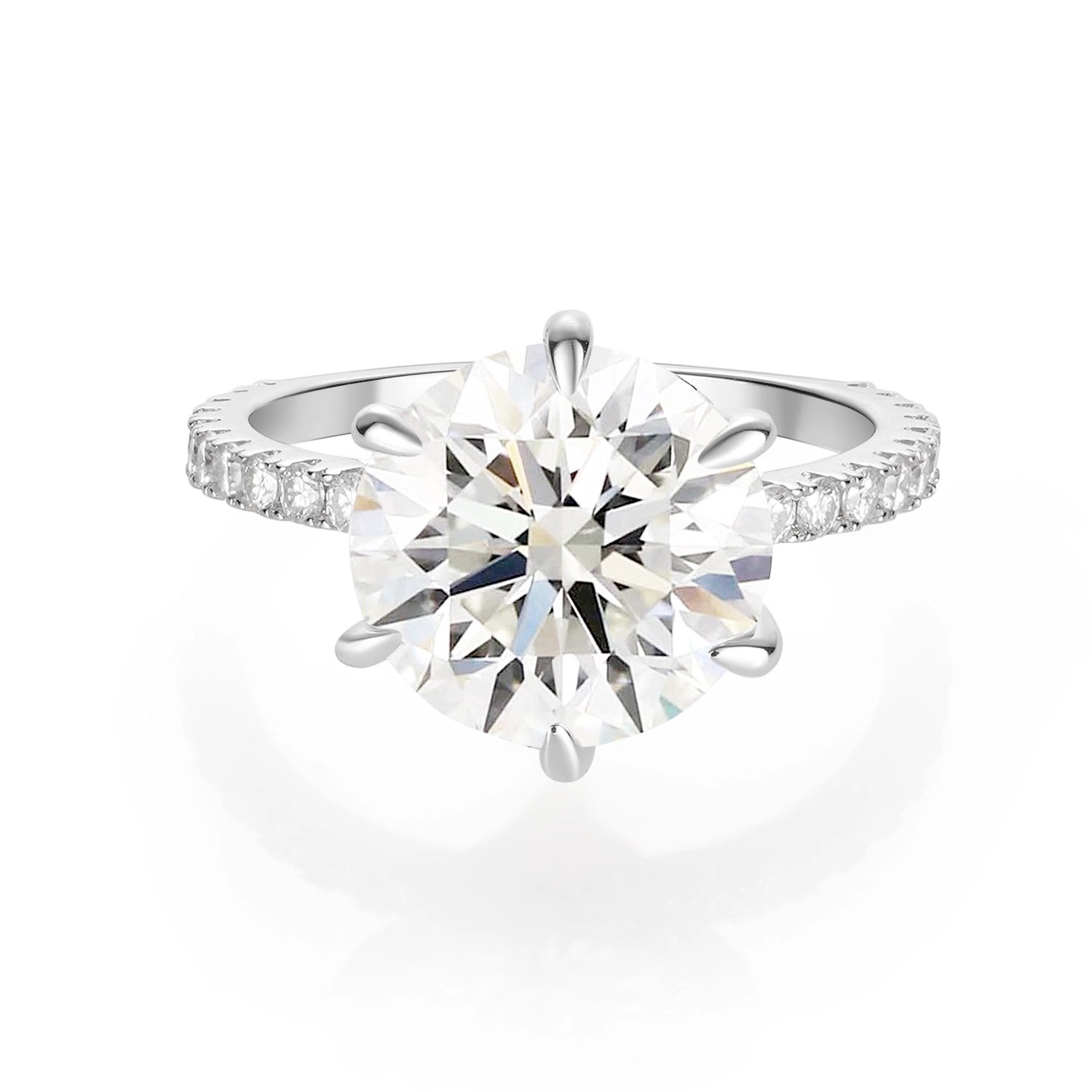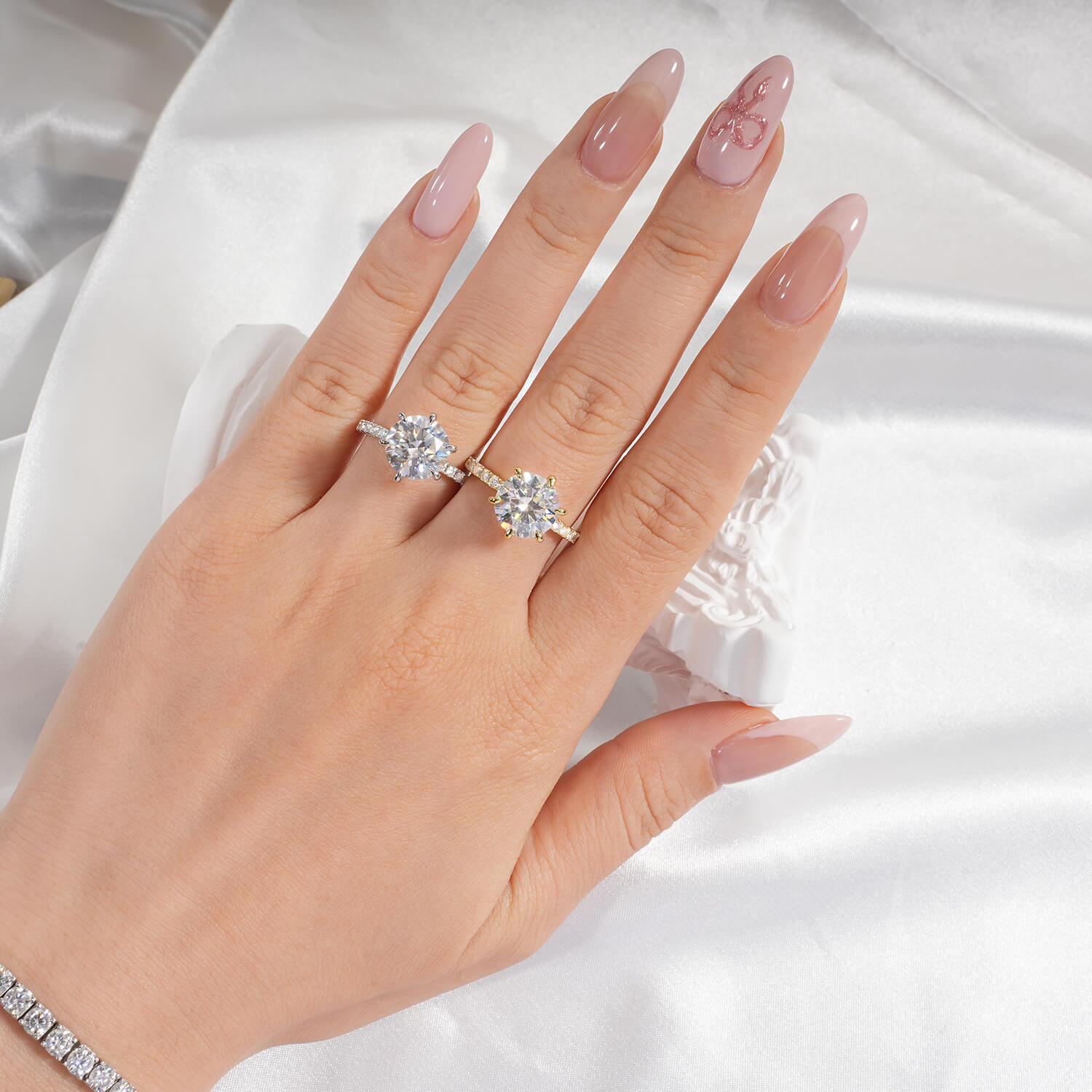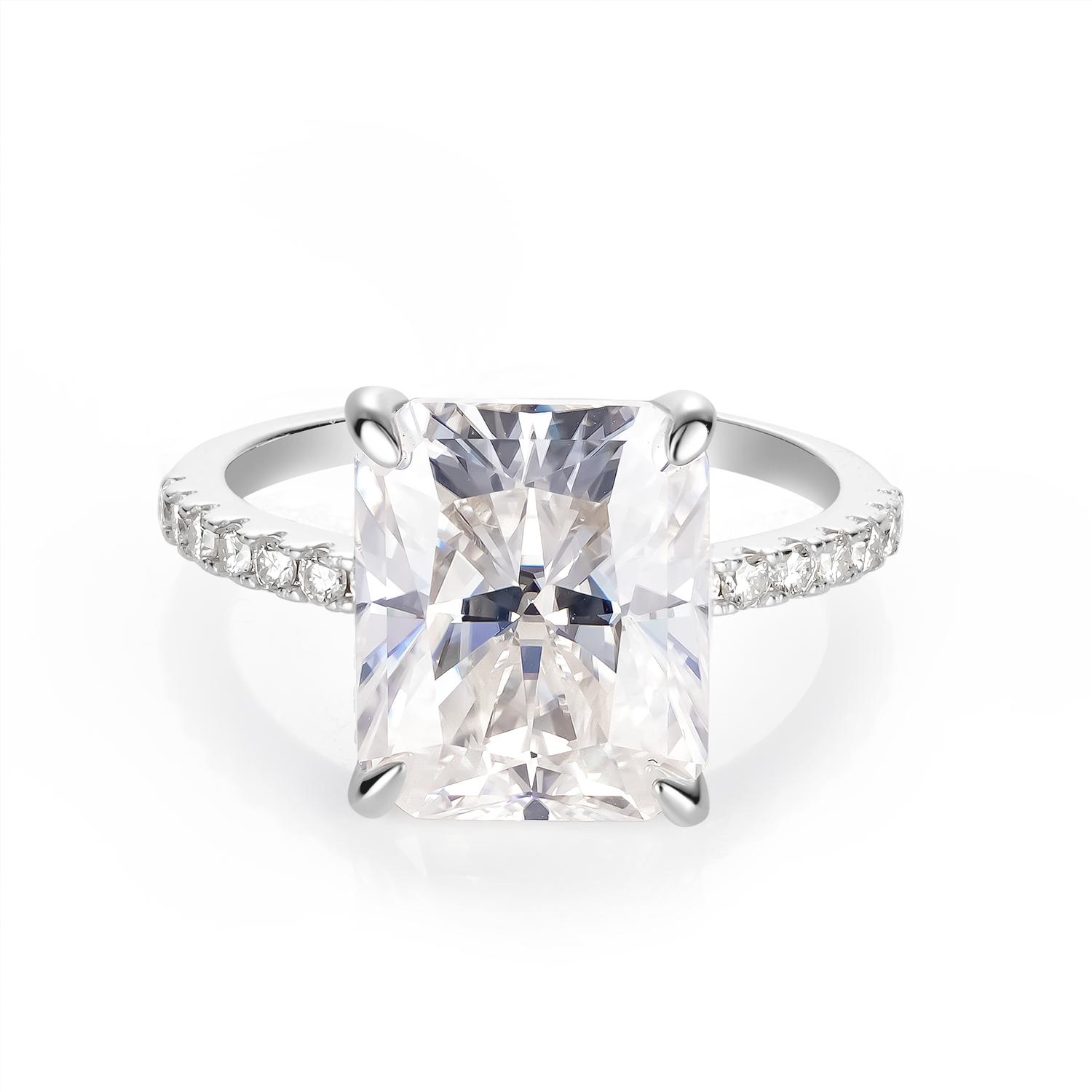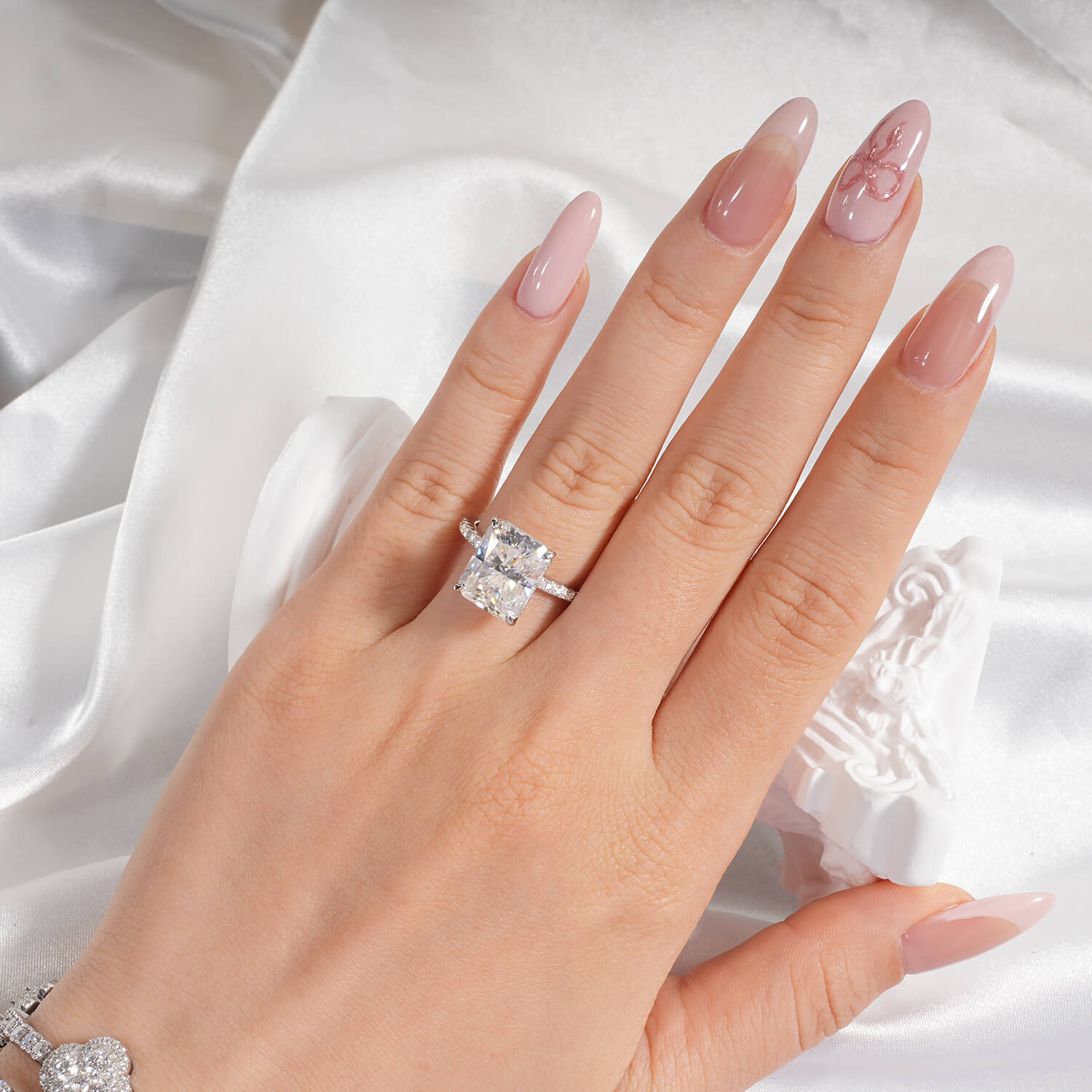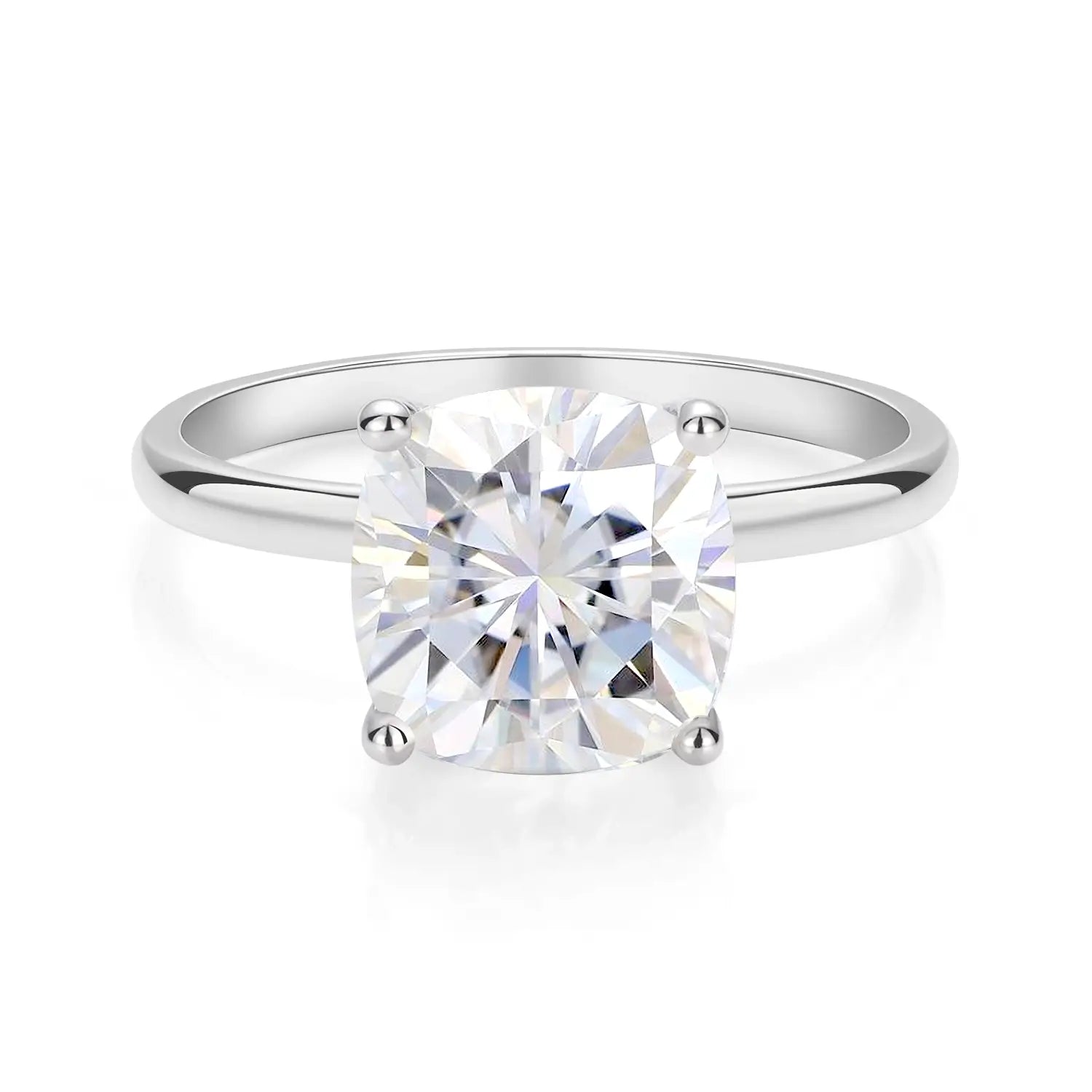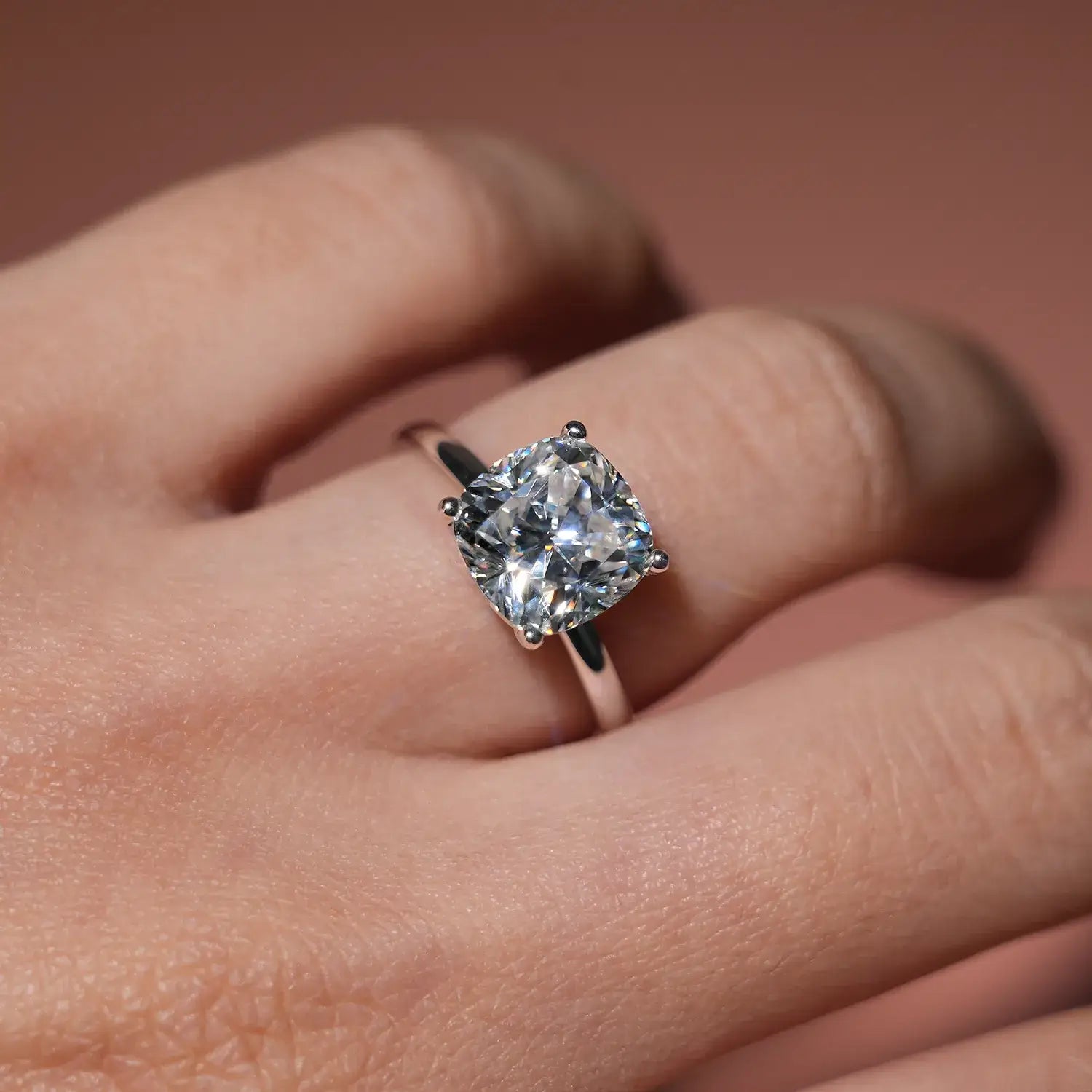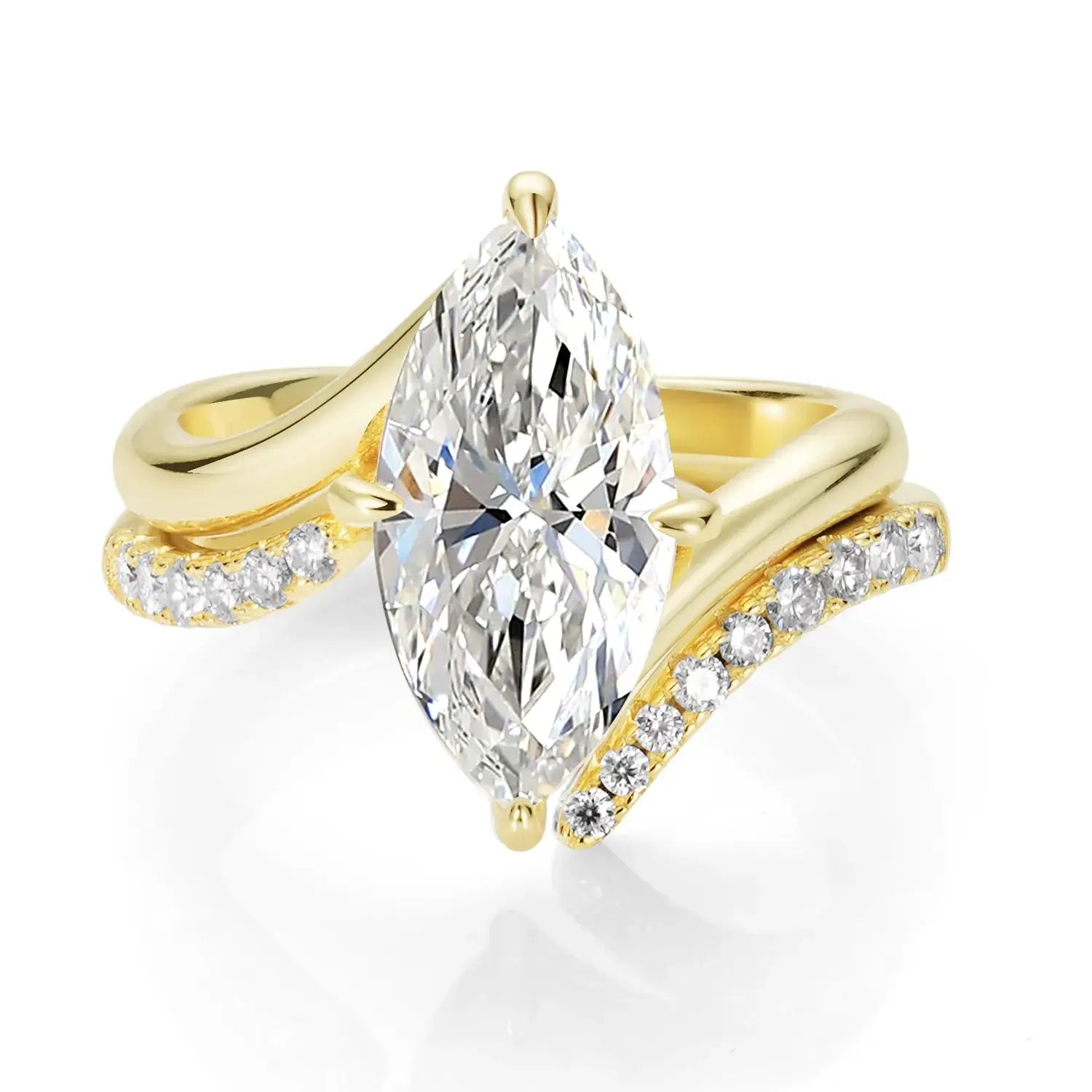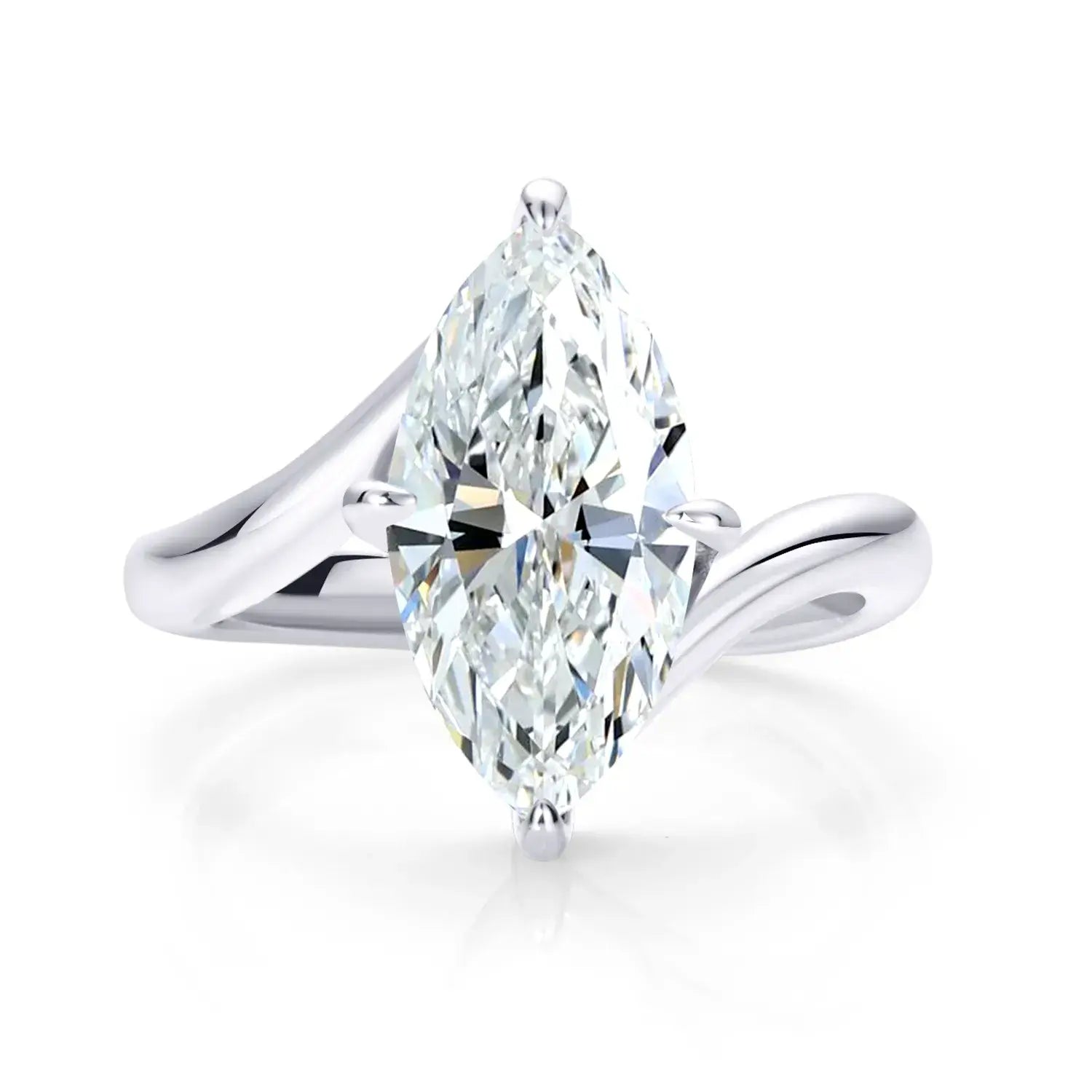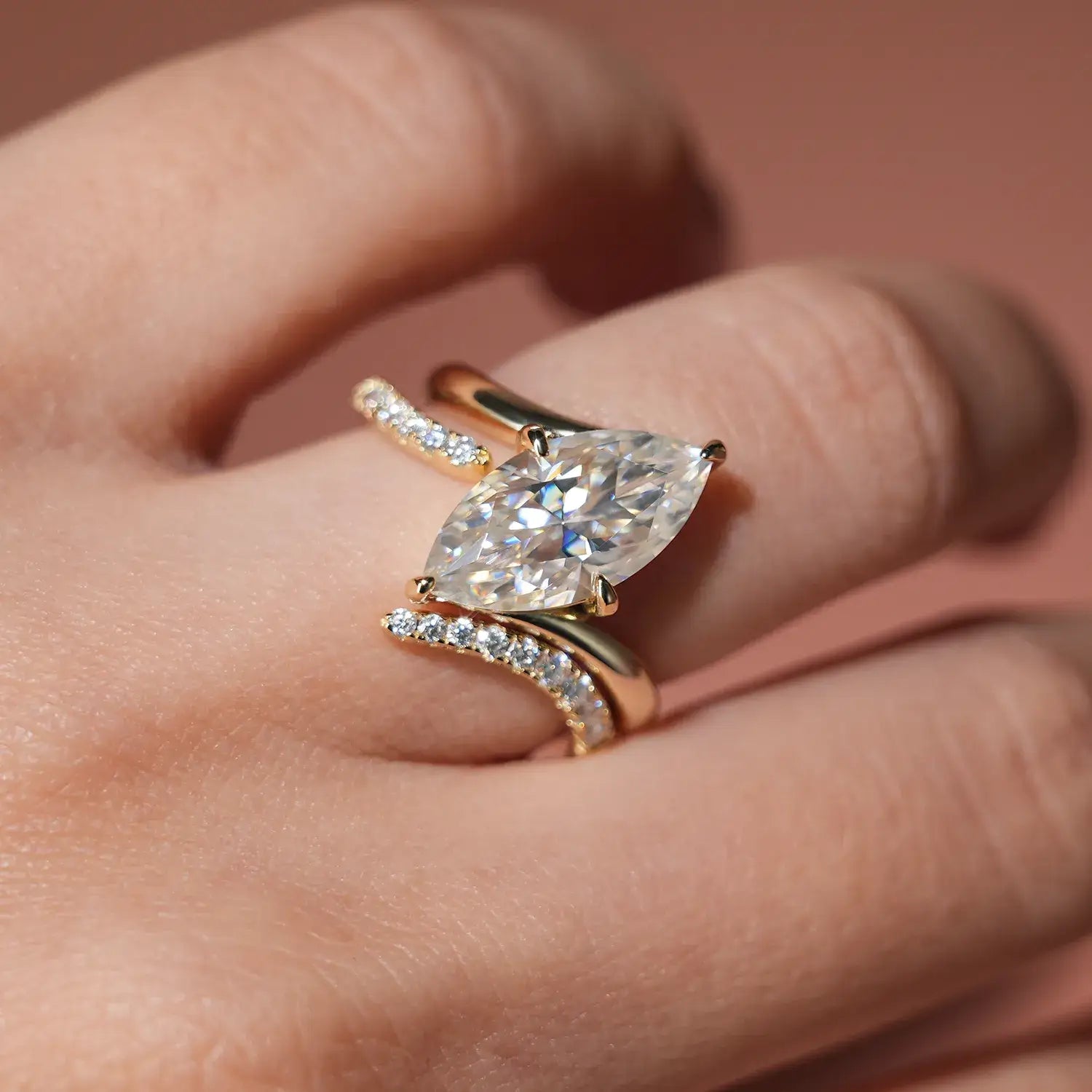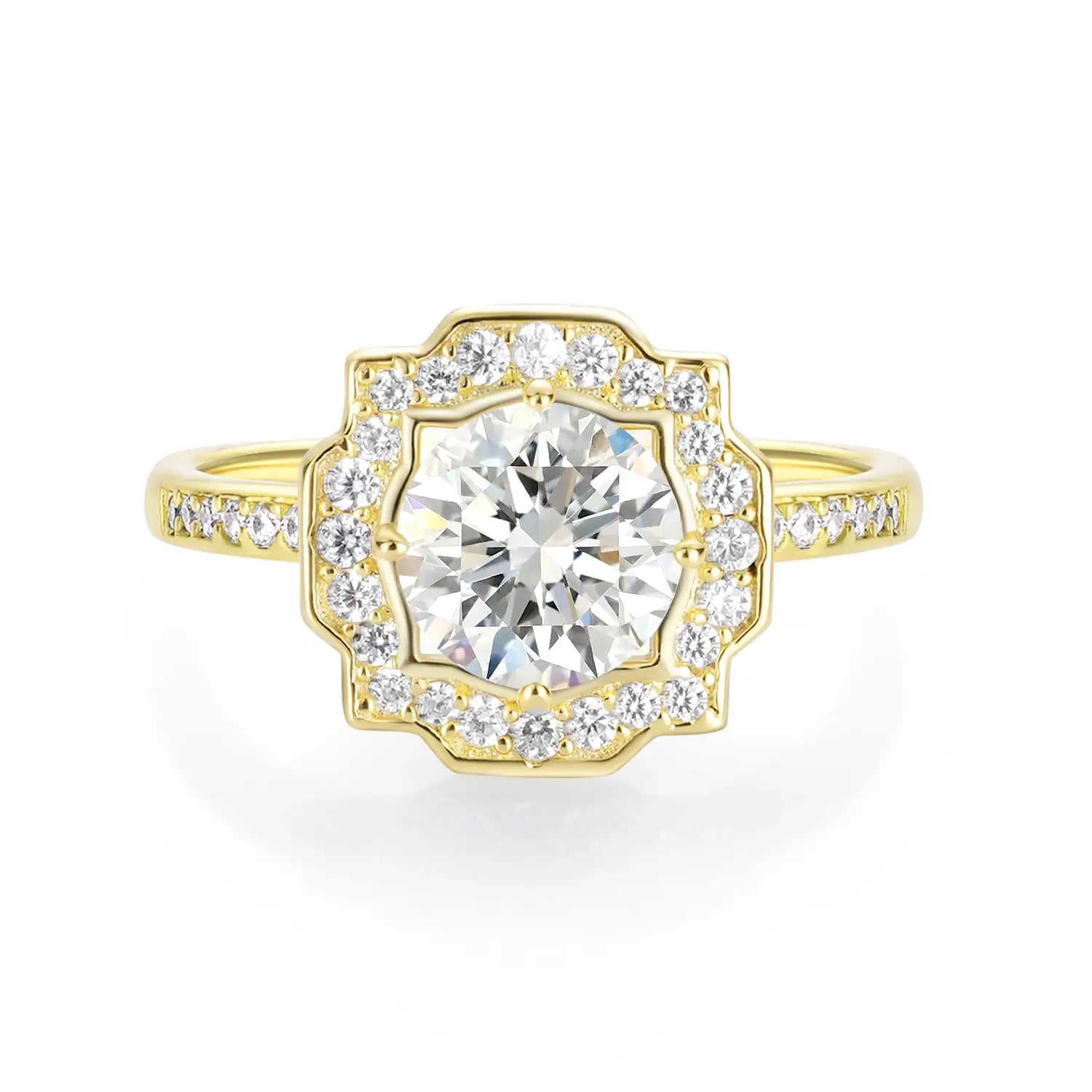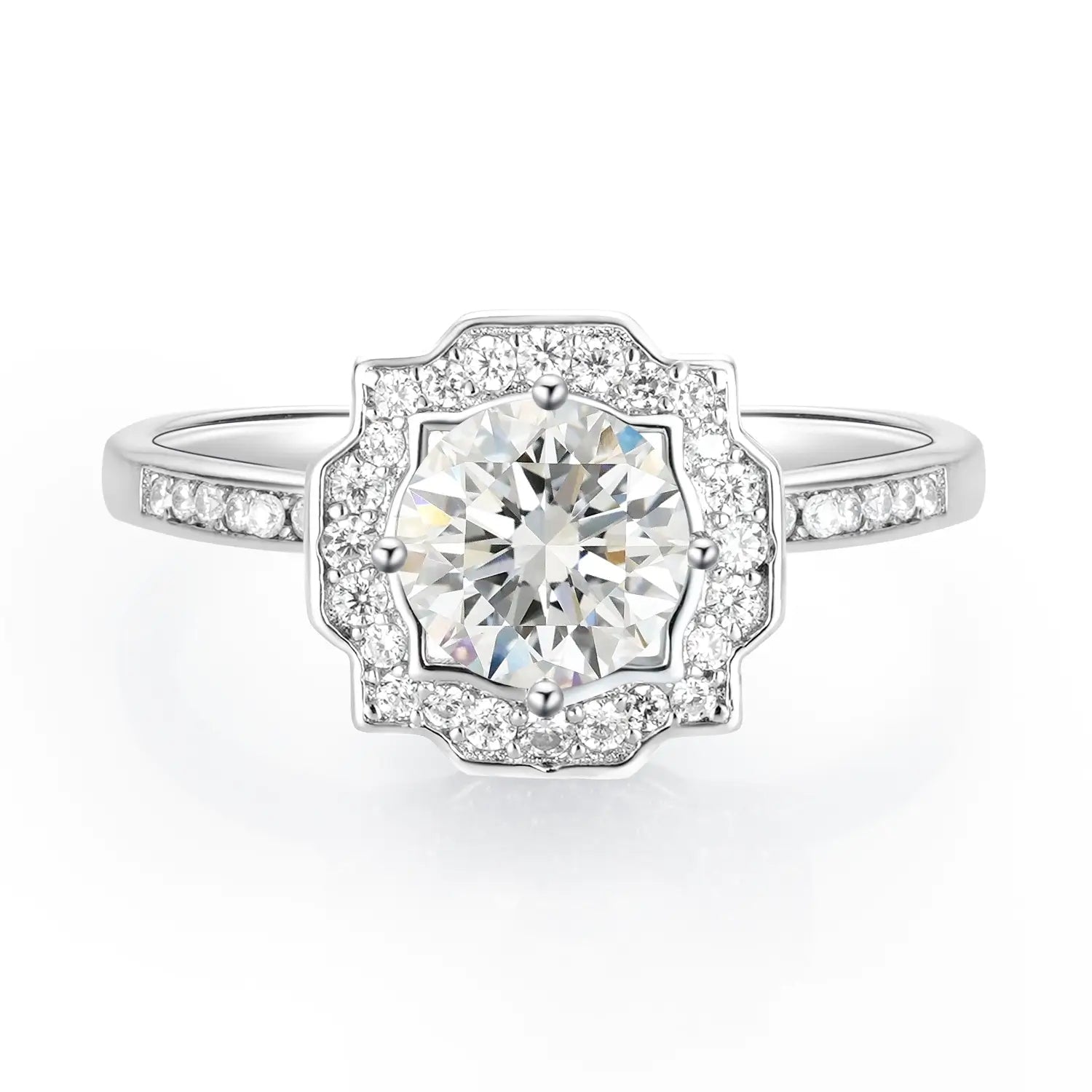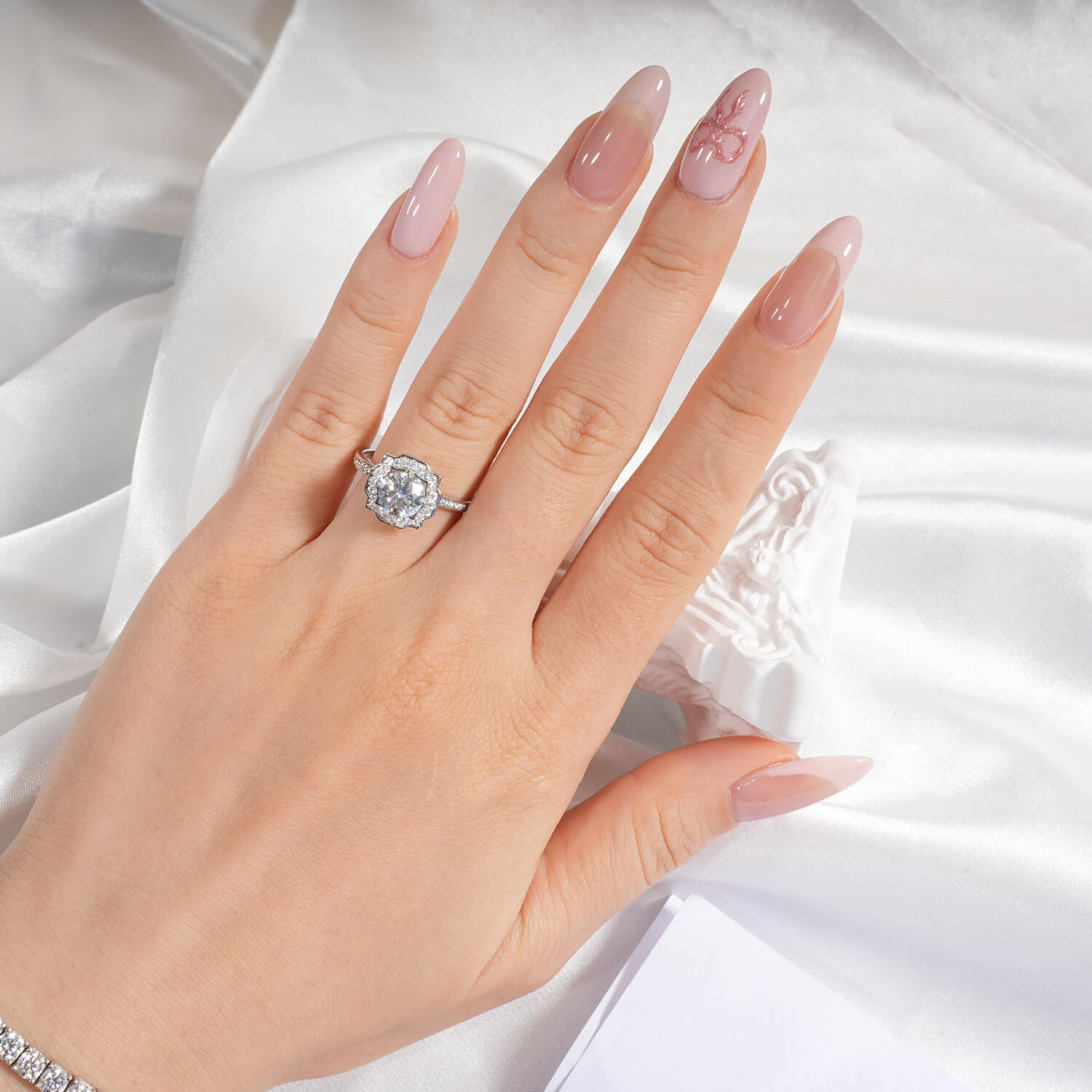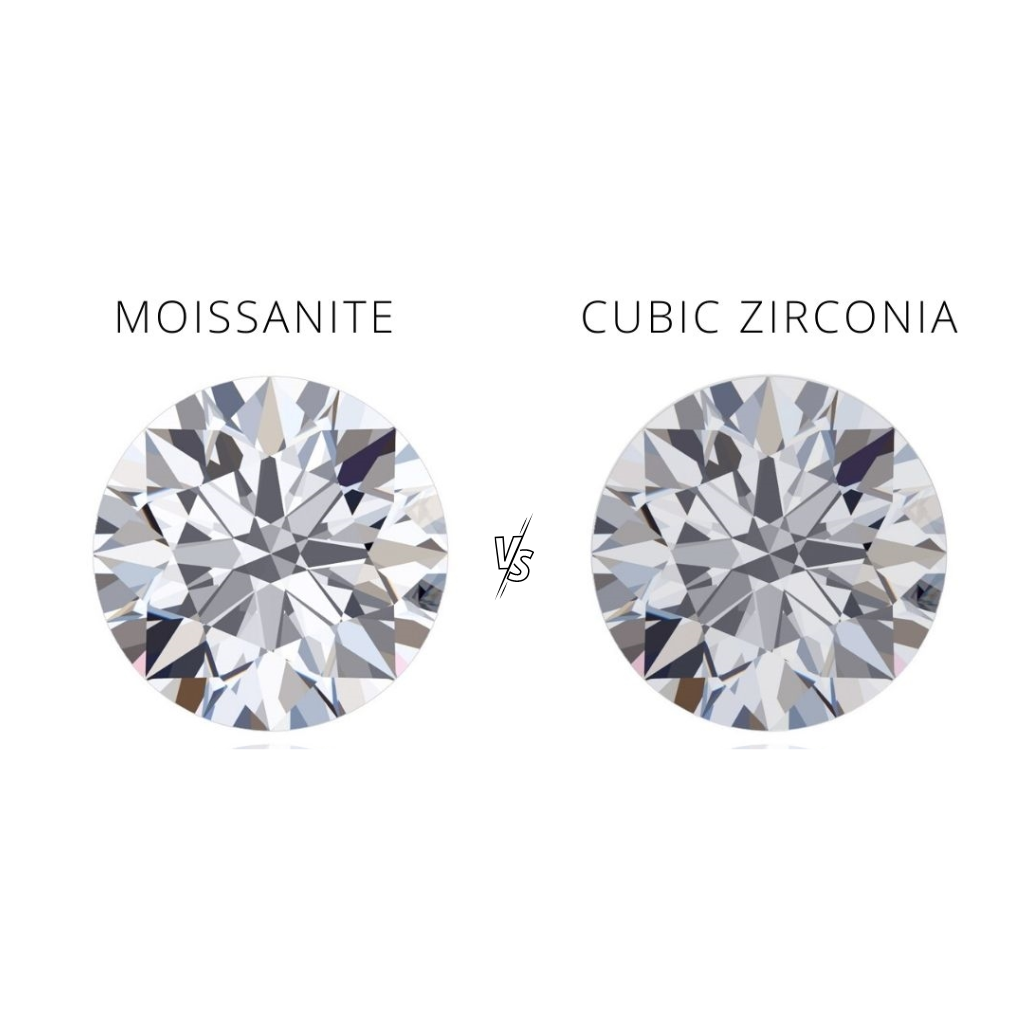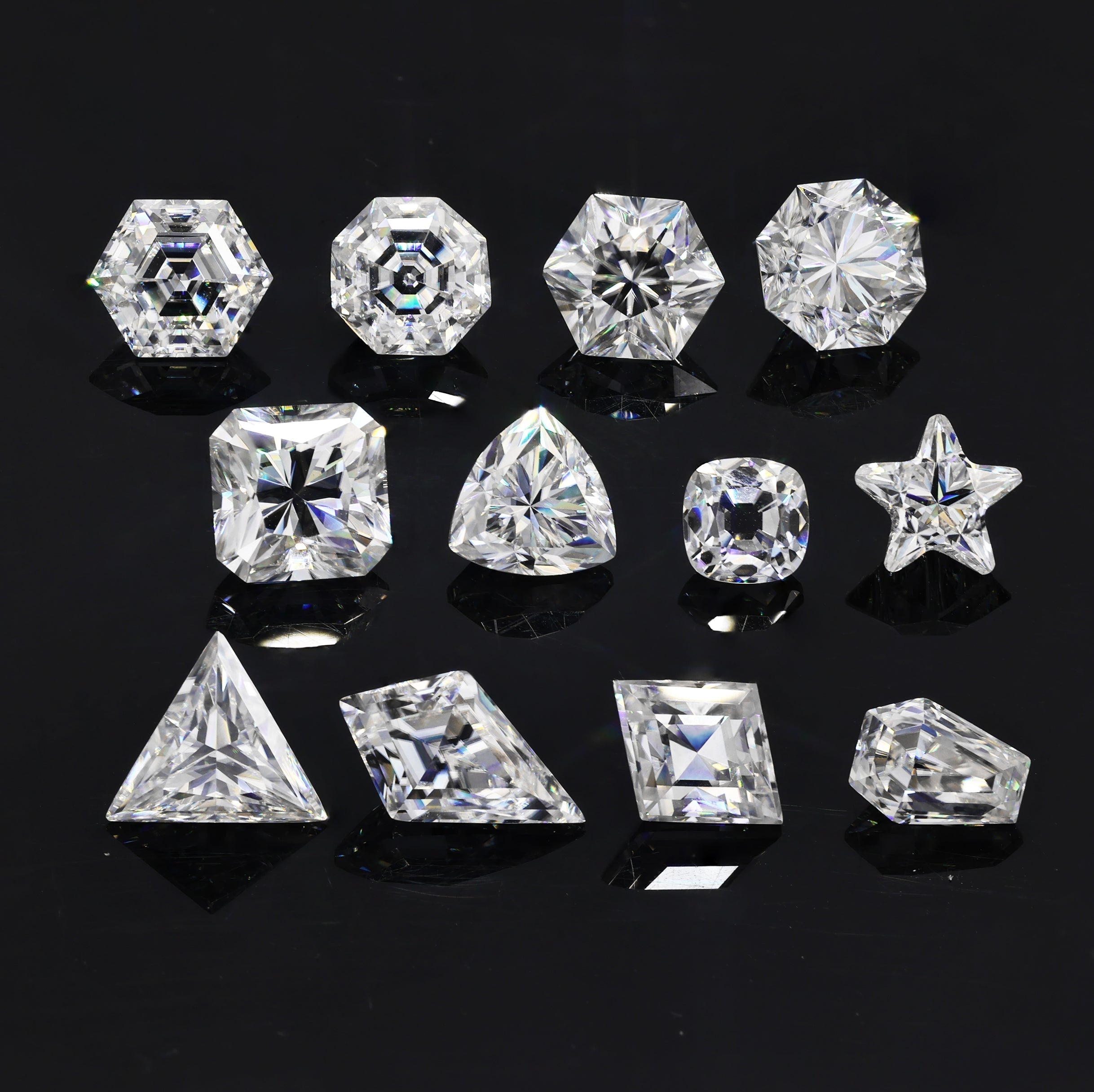What Does Diamond Carat Mean?
Carat is a measure of a diamond’s ''weight'', not its size. One carat equals ''0.2 grams'', but two diamonds of the same carat weight can look very different depending on their shape and cut.
Pro Tip: Don’t confuse “carat” with “karat,” which measures gold purity.
How Big is a Carat?
The size of a diamond depends on its shape and cut. For example:
- A 1-carat round brilliant diamond measures approximately 6.5mm x 6.5mm.
- A 1-carat oval diamond measures about 7.7mm x 5.7mm.
- A 1-carat marquise diamond can measure up to 10mm x 5mm, making it appear larger than other shapes.
Key Takeaway: Elongated shapes like ovals and marquise diamonds tend to look larger than round or square shapes of the same carat weight.
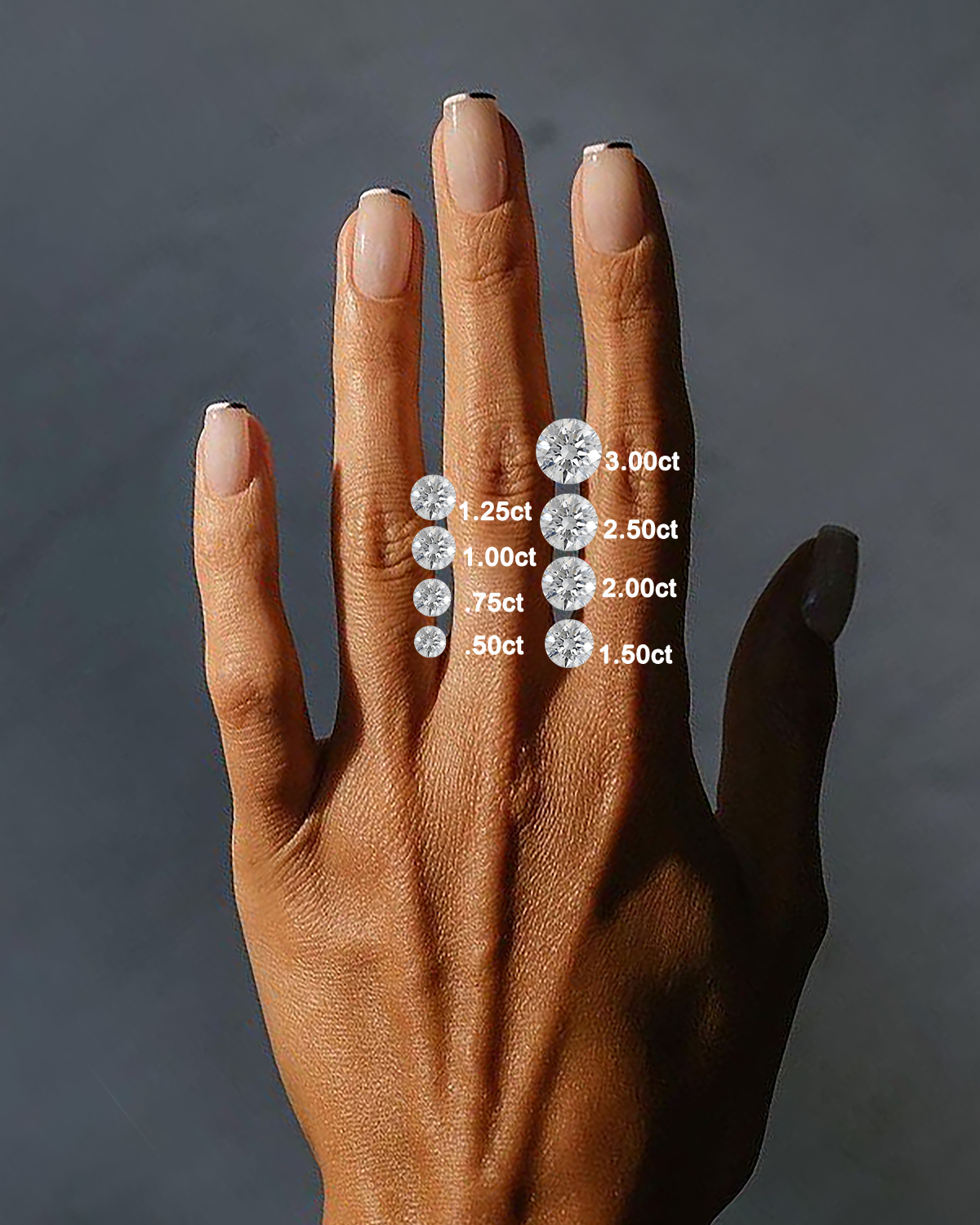
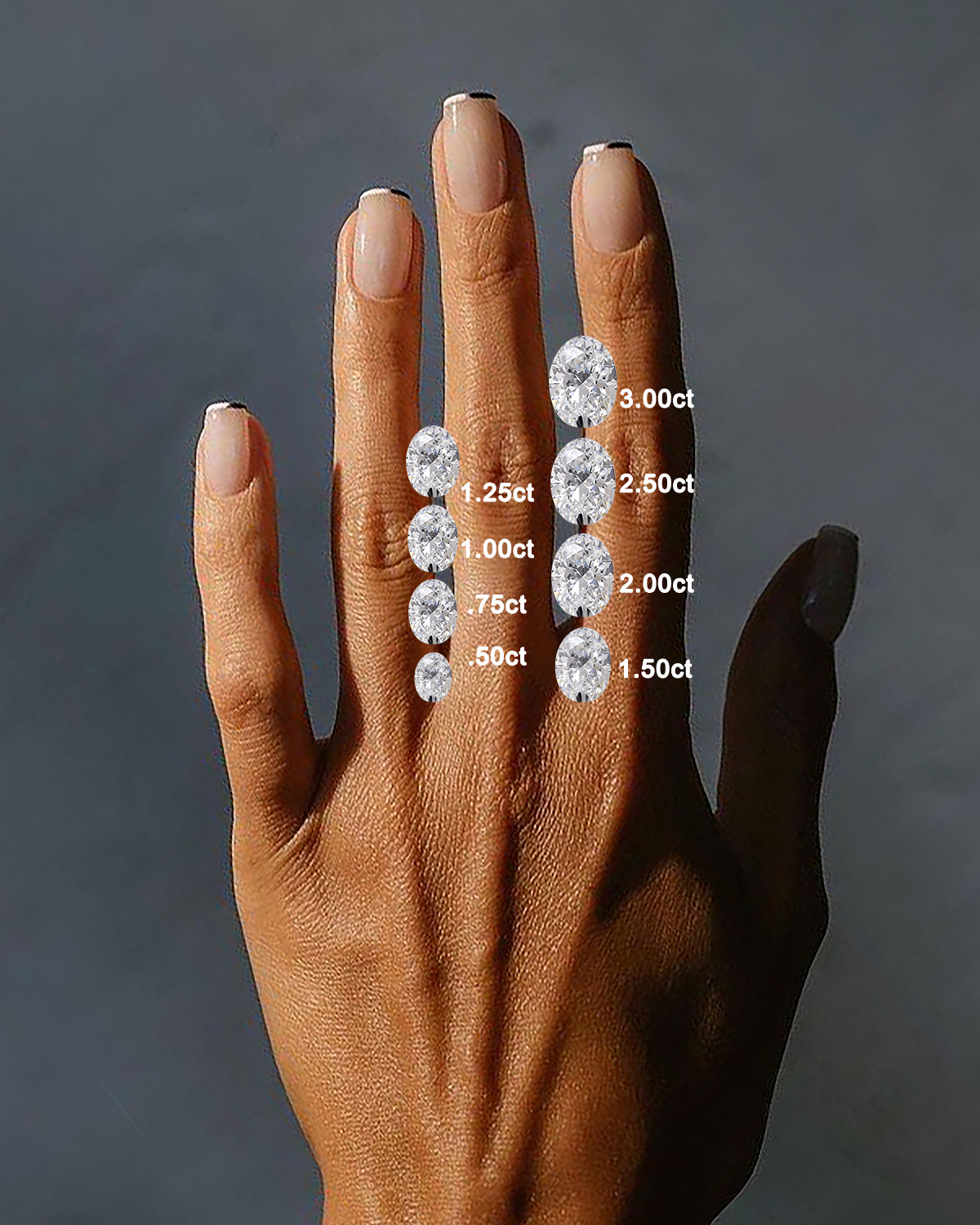
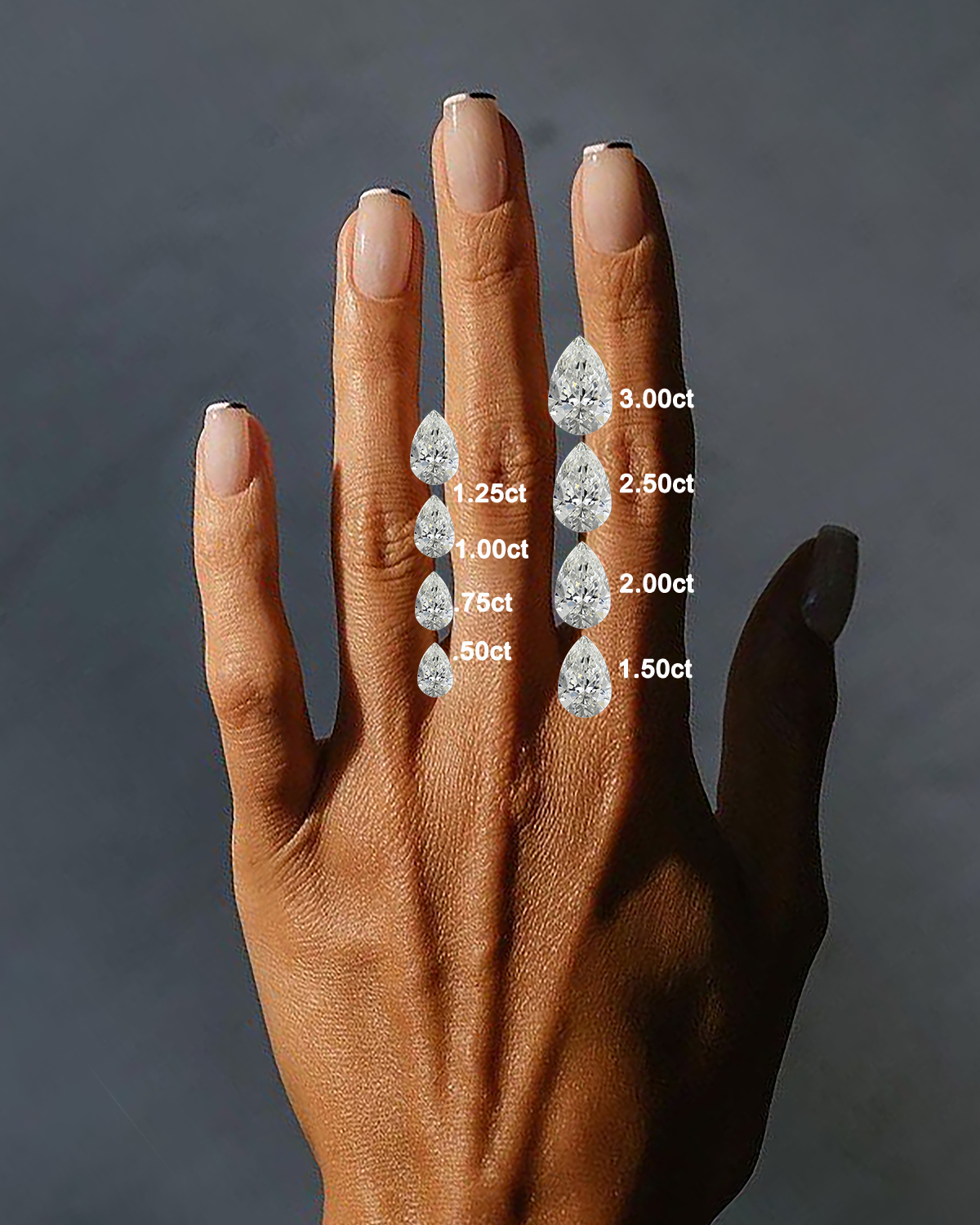
Diamond Carat Sizes on a Hand
The best way to understand how different carat sizes look is to see them on a hand. Here’s a quick guide:
- 0.5 Carat: A subtle, classic choice. Perfect for minimalist styles.
- 1 Carat: The most popular size, offering a balance of size and sparkle.
- 1.5 Carat: A noticeable step up in size, ideal for those who want a statement piece.
- 2 Carat: A luxurious choice that makes a bold impression.
- 3 Carat and Above: A show-stopping size for those who want maximum impact.
Pro Tip: Finger size plays a role in how large a diamond appears. A 1-carat diamond will look larger on a size 4 finger than on a size 8.
Diamond Carat Sizes on a Hand
The best way to understand how different carat sizes look is to see them on a hand. Here’s a quick guide:
- 0.5 Carat: A subtle, classic choice. Perfect for minimalist styles.
- 1 Carat: The most popular size, offering a balance of size and sparkle.
- 1.5 Carat: A noticeable step up in size, ideal for those who want a statement piece.
- 2 Carat: A luxurious choice that makes a bold impression.
- 3 Carat and Above: A show-stopping size for those who want maximum impact.
Pro Tip: Finger size plays a role in how large a diamond appears. A 1-carat diamond will look larger on a size 4 finger than on a size 8.
Diamond Carat Sizes on a Hand
The best way to understand how different carat sizes look is to see them on a hand. Here’s a quick guide:
- 0.5 Carat: A subtle, classic choice. Perfect for minimalist styles.
- 1 Carat: The most popular size, offering a balance of size and sparkle.
- 1.5 Carat: A noticeable step up in size, ideal for those who want a statement piece.
- 2 Carat: A luxurious choice that makes a bold impression.
- 3 Carat and Above: A show-stopping size for those who want maximum impact.
Pro Tip: Finger size plays a role in how large a diamond appears. A 1-carat diamond will look larger on a size 4 finger than on a size 8.
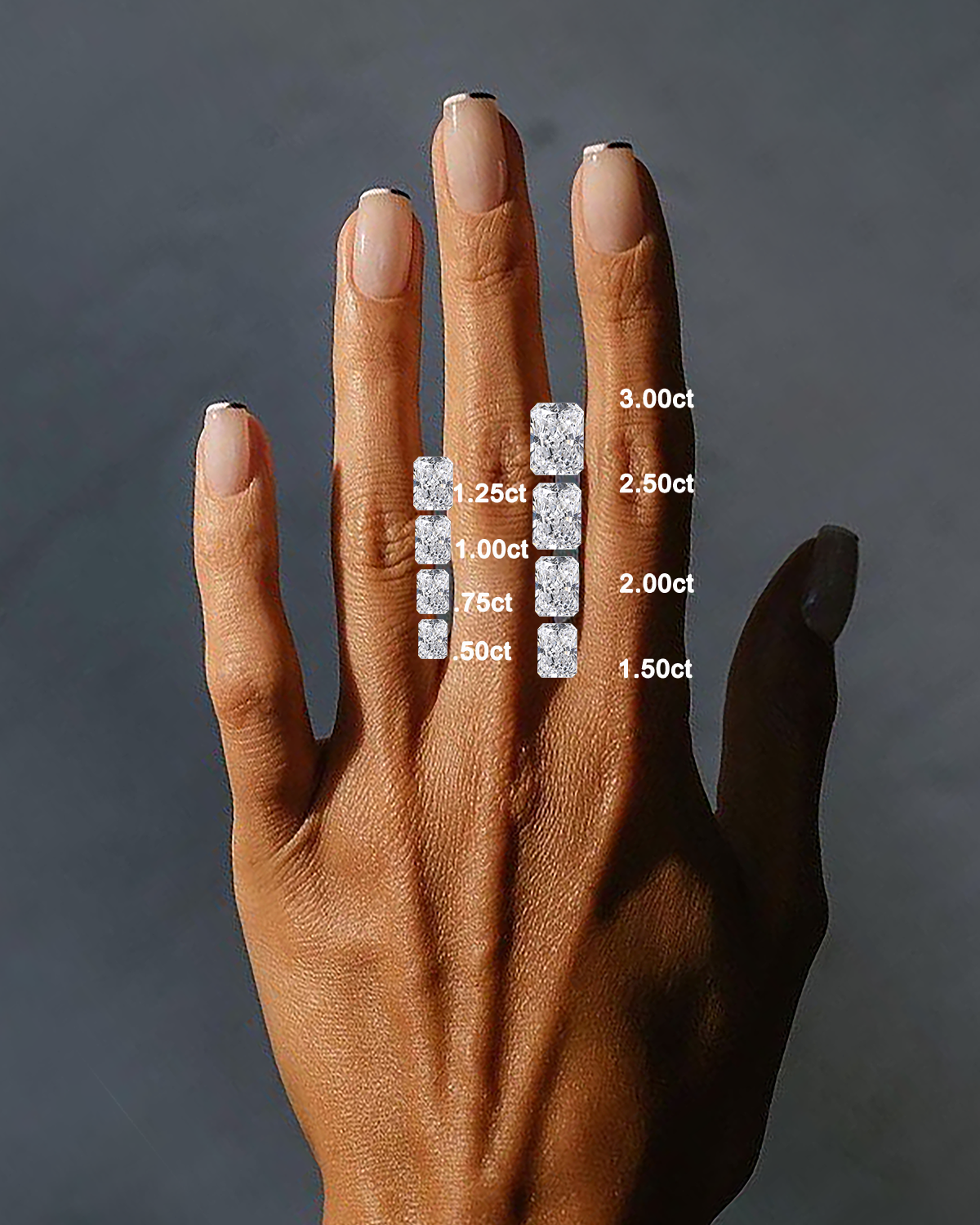
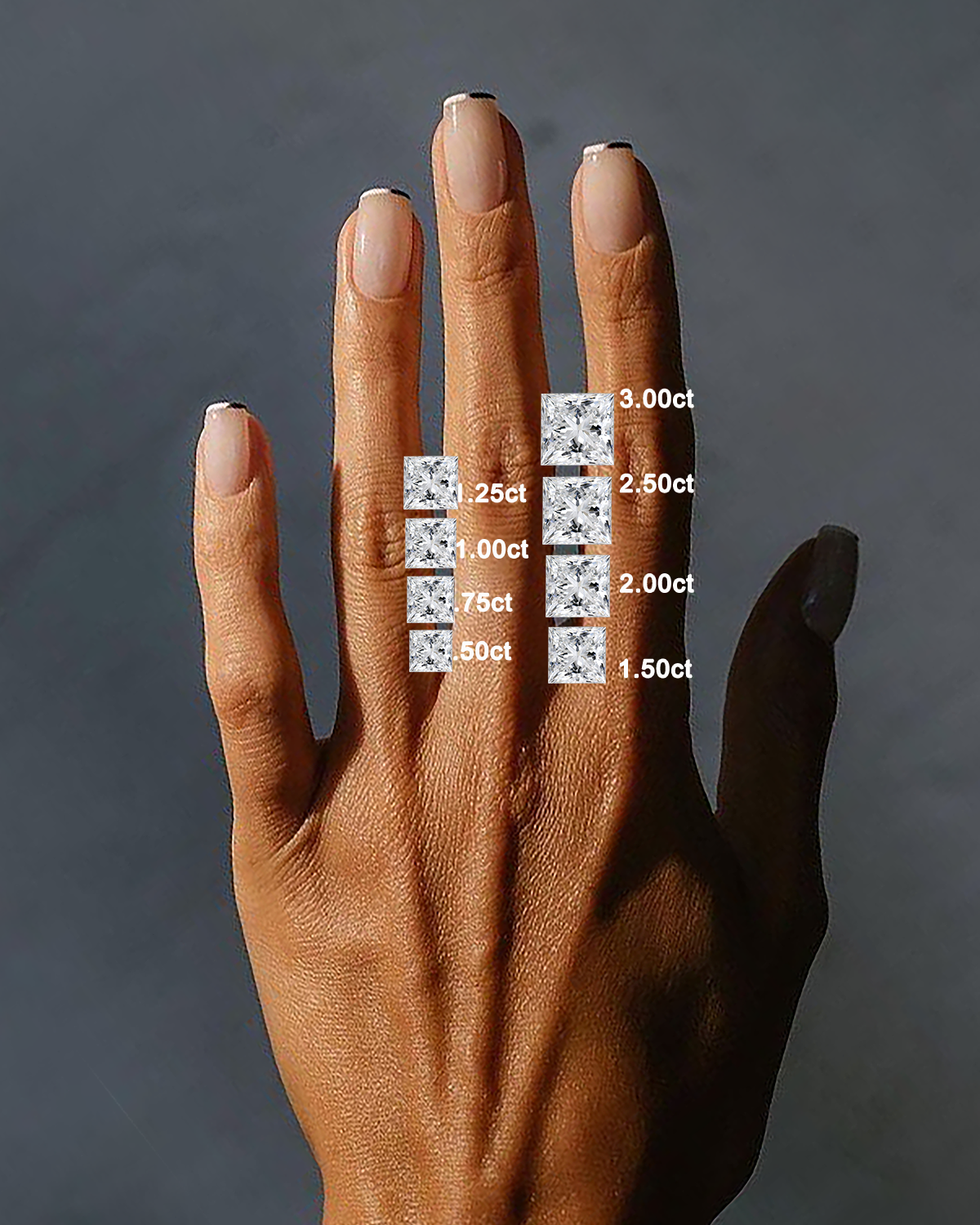
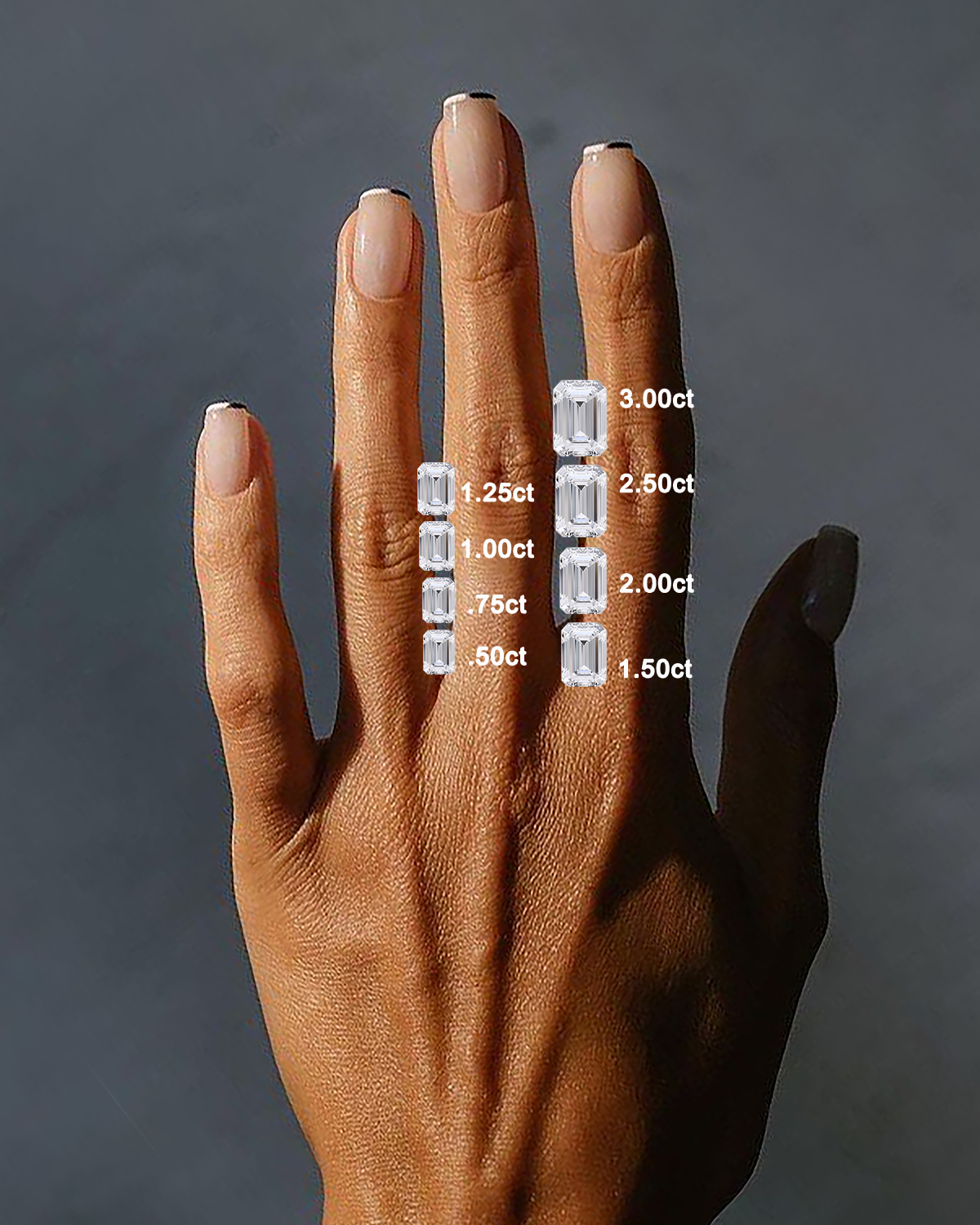
How to Get the Largest-Looking Diamond
Want to maximize your diamond’s appearance without breaking the bank? Follow these expert tips:
- Prioritize Cut: A well-cut diamond reflects more light, making it appear larger and more brilliant. Opt for Excellent or Very Good cut grades.
- Choose Lower Clarity and Color Grades: Select a diamond with eye-clean clarity (no visible inclusions) and a near-colorless grade (G or H). This frees up budget for a higher carat weight.
- Go for Elongated Shapes: Marquise, oval, and pear shapes appear larger than round or square diamonds of the same carat weight.
- Buy Just Shy of Popular Sizes: A 0.96-carat diamondcosts significantly less than a 1-carat diamond but looks nearly identical.
- Opt for a Thin Band: A slim band creates contrast, making the center stone appear larger.
- Consider a Halo Setting: A halo of smaller diamonds around the center stone adds finger coverage and enhances its size.
How to Get the Largest-Looking Diamond
Want to maximize your diamond’s appearance without breaking the bank? Follow these expert tips:
- Prioritize Cut: A well-cut diamond reflects more light, making it appear larger and more brilliant. Opt for Excellent or Very Good cut grades.
- Choose Lower Clarity and Color Grades: Select a diamond with eye-clean clarity (no visible inclusions) and a near-colorless grade (G or H). This frees up budget for a higher carat weight.
- Go for Elongated Shapes: Marquise, oval, and pear shapes appear larger than round or square diamonds of the same carat weight.
- Buy Just Shy of Popular Sizes: A 0.96-carat diamondcosts significantly less than a 1-carat diamond but looks nearly identical.
- Opt for a Thin Band: A slim band creates contrast, making the center stone appear larger.
- Consider a Halo Setting: A halo of smaller diamonds around the center stone adds finger coverage and enhances its size.
How to Get the Largest-Looking Diamond
Want to maximize your diamond’s appearance without breaking the bank? Follow these expert tips:
- Prioritize Cut: A well-cut diamond reflects more light, making it appear larger and more brilliant. Opt for Excellent or Very Good cut grades.
- Choose Lower Clarity and Color Grades: Select a diamond with eye-clean clarity (no visible inclusions) and a near-colorless grade (G or H). This frees up budget for a higher carat weight.
- Go for Elongated Shapes: Marquise, oval, and pear shapes appear larger than round or square diamonds of the same carat weight.
- Buy Just Shy of Popular Sizes: A 0.96-carat diamondcosts significantly less than a 1-carat diamond but looks nearly identical.
- Opt for a Thin Band: A slim band creates contrast, making the center stone appear larger.
- Consider a Halo Setting: A halo of smaller diamonds around the center stone adds finger coverage and enhances its size.
Diamond Carat and Price
Diamond prices don’t increase linearly with carat weight. Larger diamonds are rarer, so prices jump significantly at popular weight thresholds (e.g., 0.5, 1, 1.5 carats).
Pro Tip: Look for diamonds just below these thresholds (e.g., 0.9 carats instead of 1 carat) to save money without sacrificing size.
Alternative Stones for a Larger Look
If you’re open to alternatives, consider these options:
- Rose Cut Diamonds: These have a larger surface area for the same carat weight, making them appear bigger.
- White Sapphires: A budget-friendly alternative that looks similar to diamonds but costs significantly less.
Diamond Carat FAQs
The most popular carat size for an engagement ring is 1 carat, as it balances size, brilliance, and affordability. However, ''0.5-carat diamonds'' are great for minimalist styles, while ''1.5-carat or larger'' options make a bolder statement.
Not necessarily. A larger carat weight doesn’t always mean a better diamond. Cut quality is the most important factor in determining a diamond’s brilliance. A well-cut 0.9-carat diamond can look more dazzling than a poorly cut 1-carat diamond.
The price of a 1-carat diamond varies based on cut, color, and clarity, typically ranging from $4,000 to $10,000. To save money, consider diamonds just under 1 carat (e.g., 0.9 carats), which look similar but cost significantly less.
If you're looking for a budget-friendly alternative, lab-grown diamonds offer the same brilliance and durability as natural diamonds but at 30-50% lower prices. Another great option is moissanite, which has even more fire and sparkle than a diamond at a fraction of the cost.
Elongated shapes like oval, marquise, and pear appear larger than round or princess-cut diamonds of the same weight due to their larger surface area.
A diamond will look larger on smaller fingers. For example, a 1-carat diamond appears bigger on a size 4 finger than on a size 8 finger. Choosing a thin band or a halo setting can also make the diamond appear larger.

